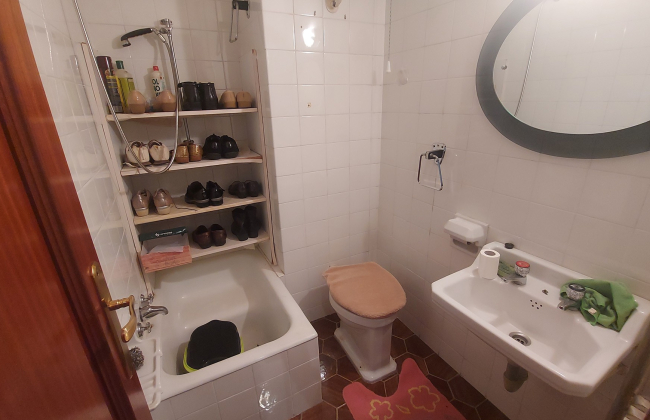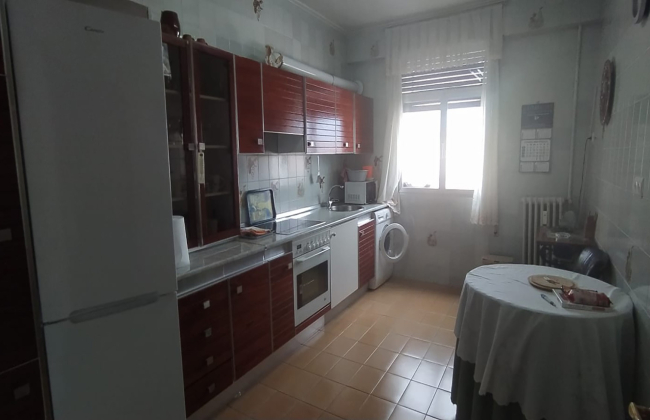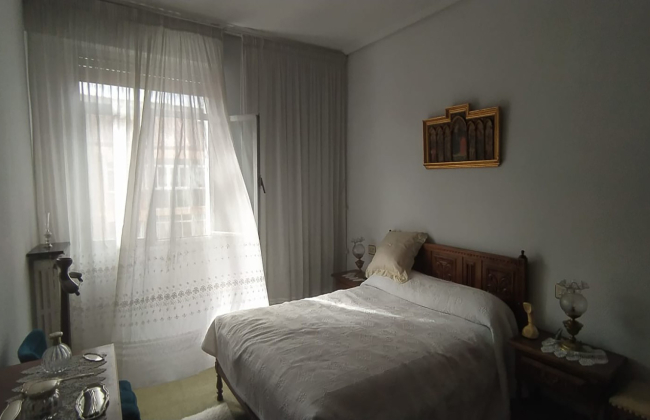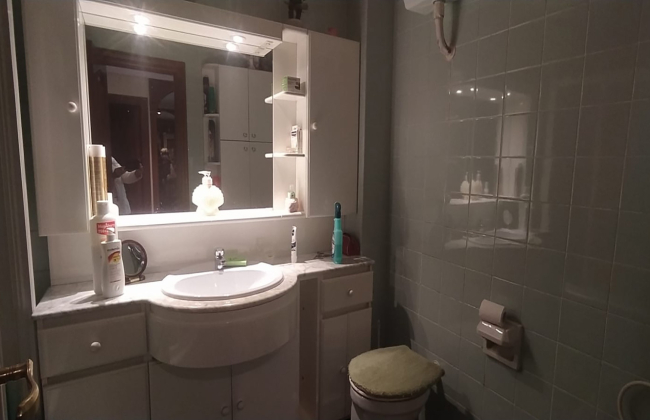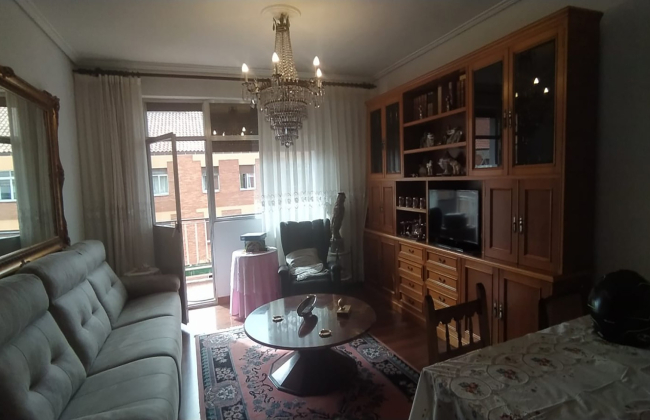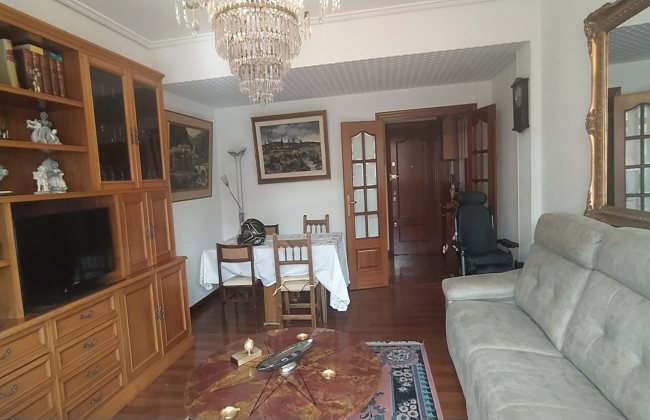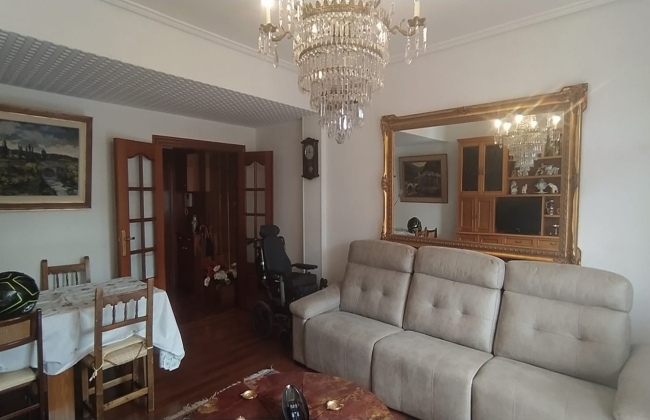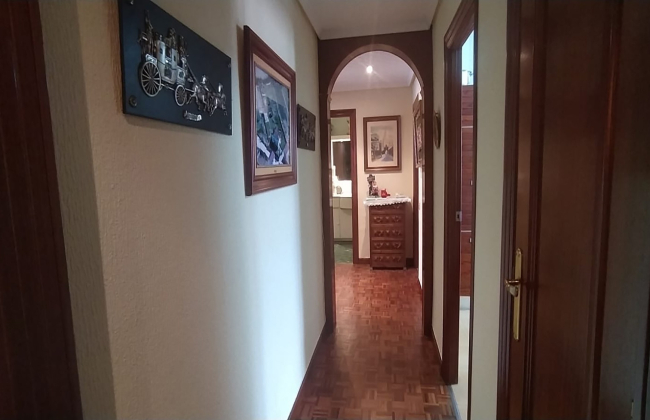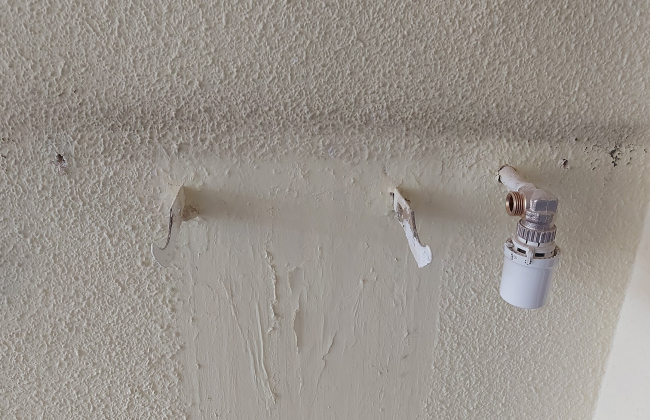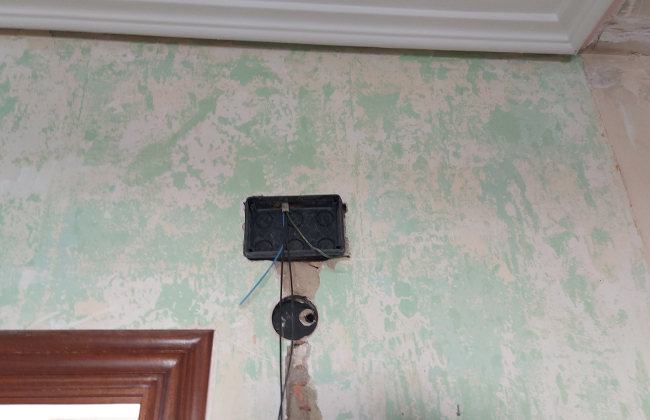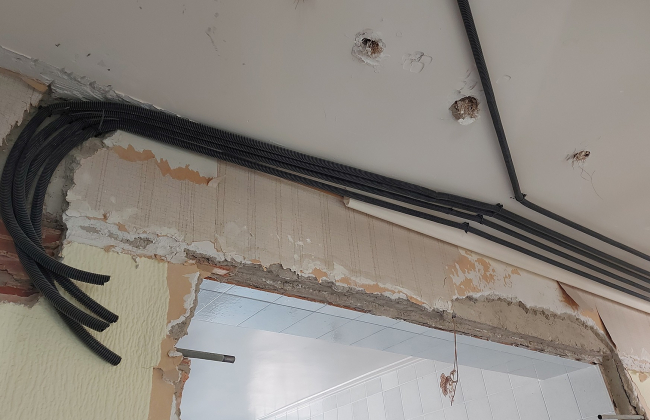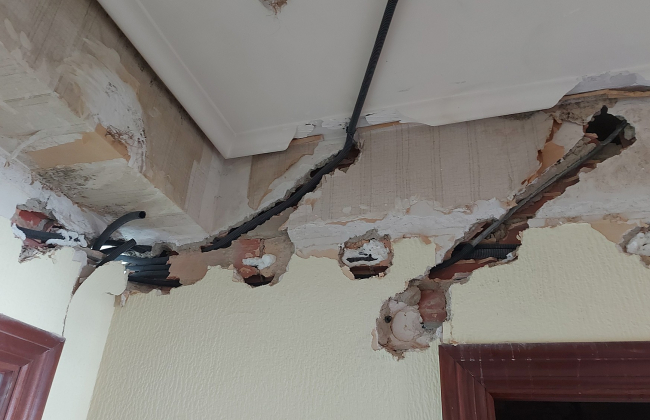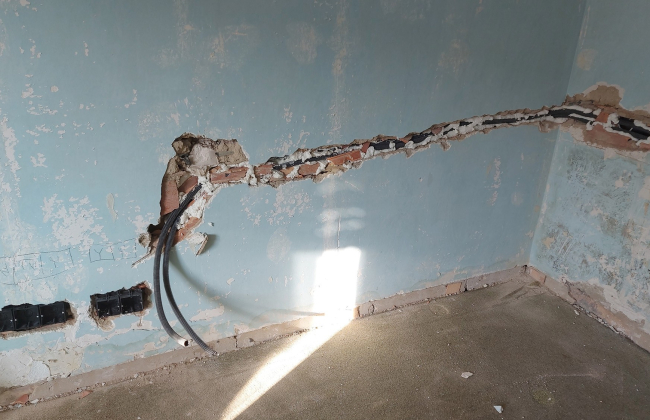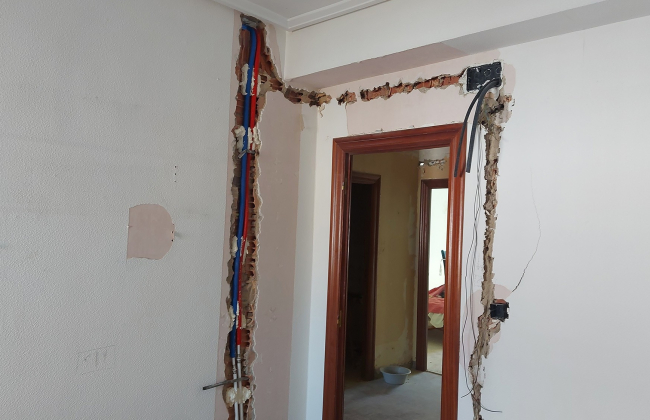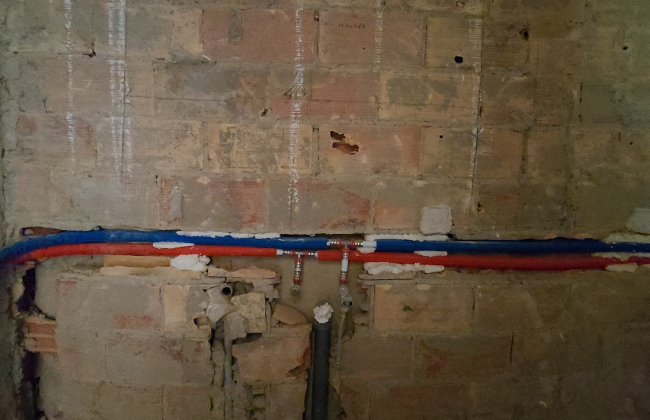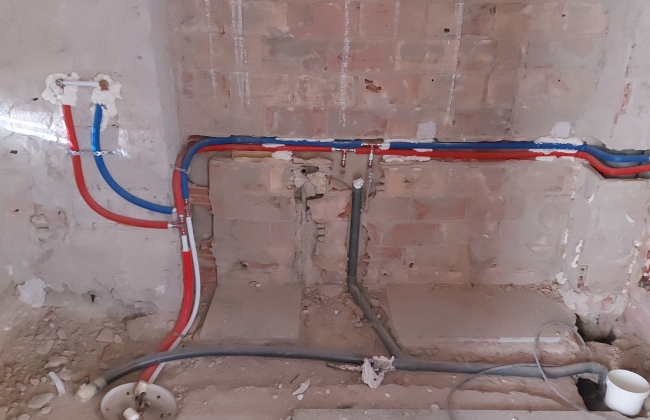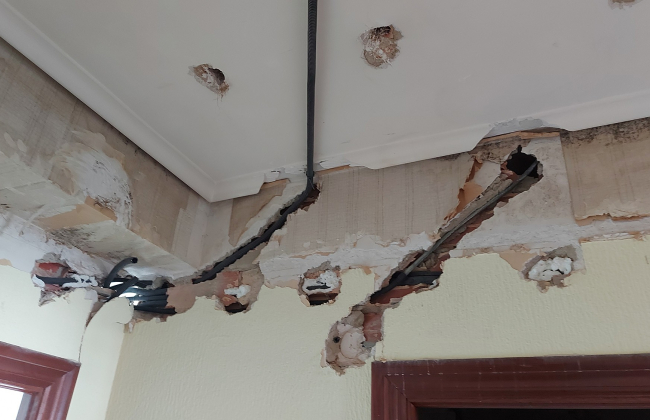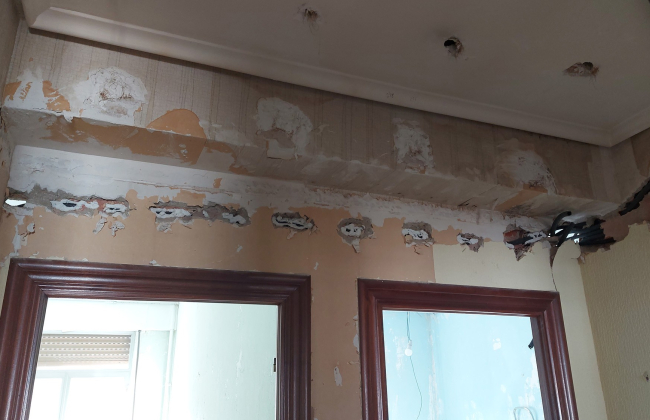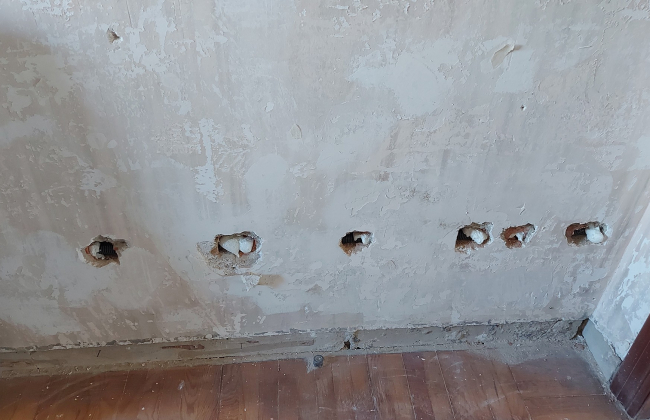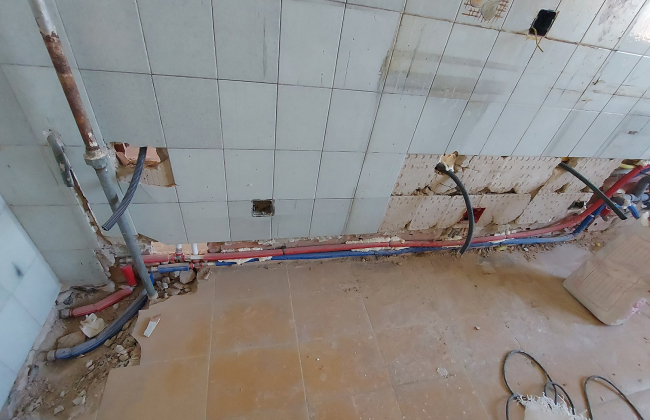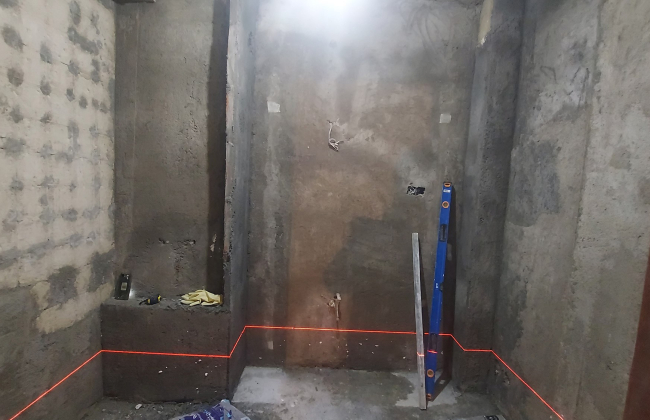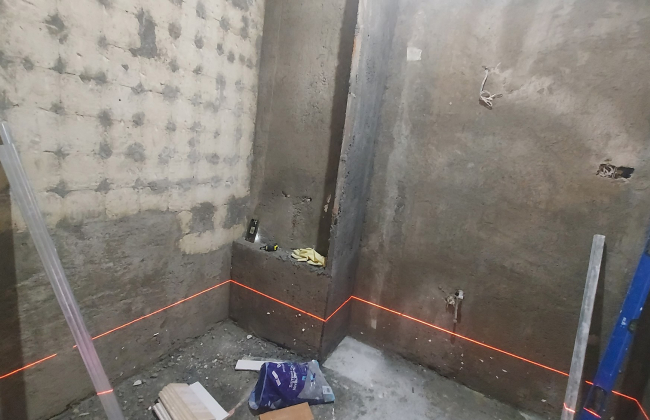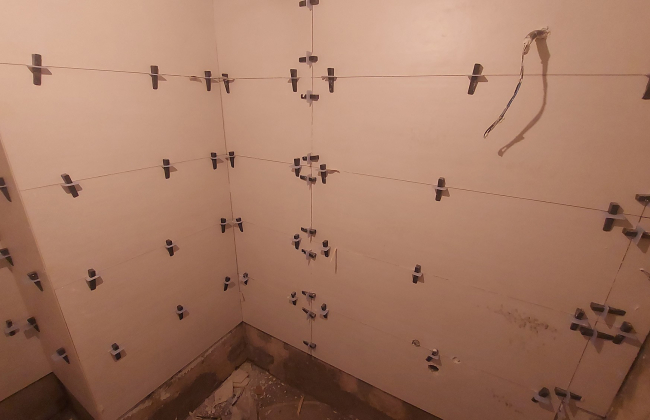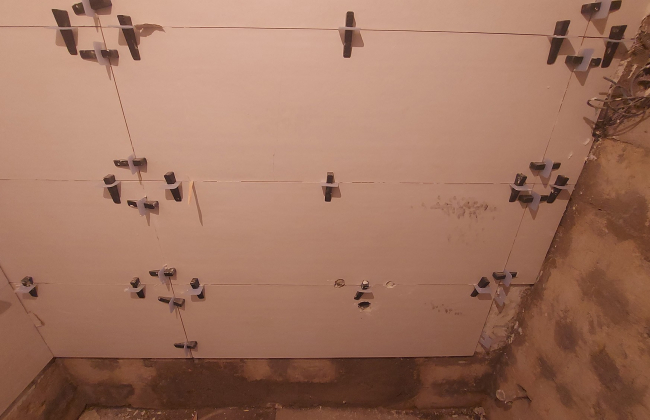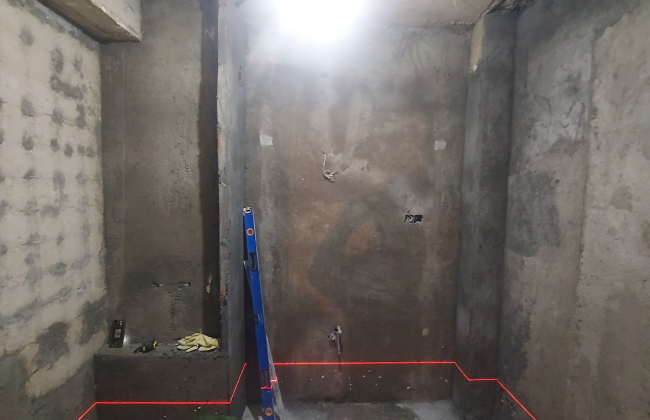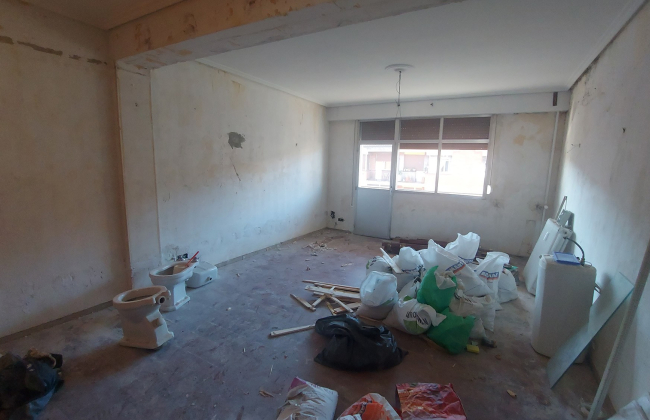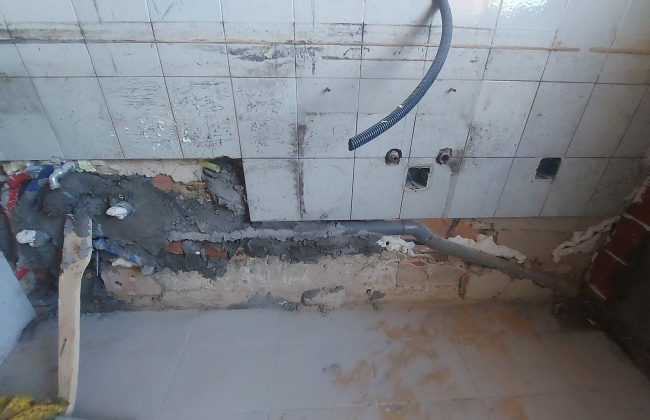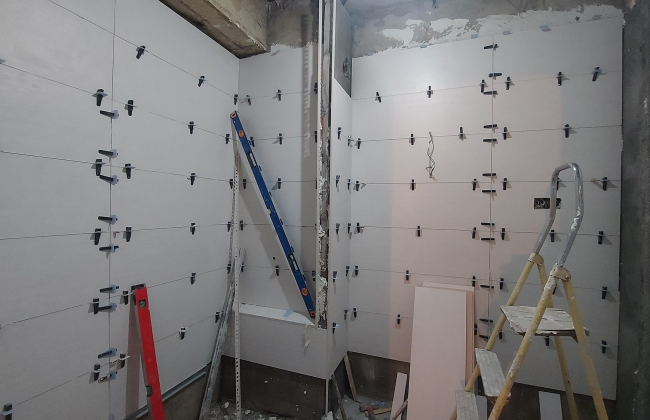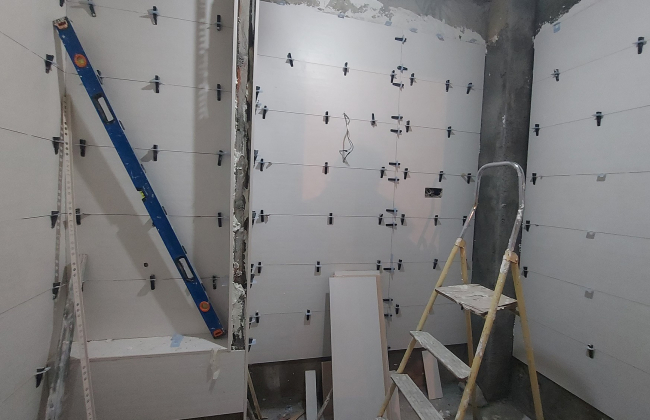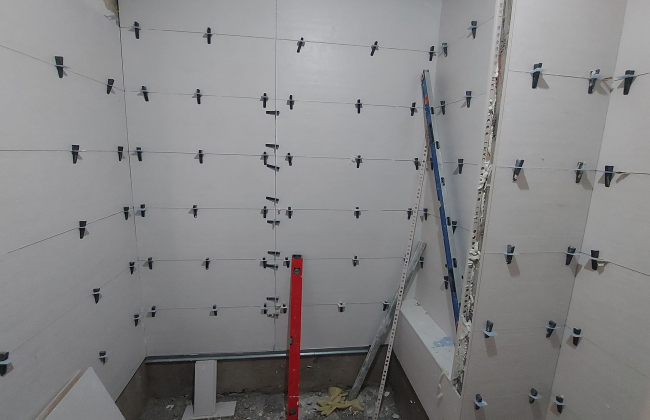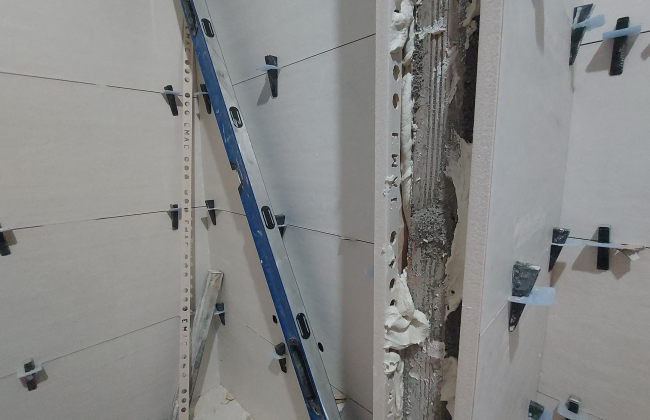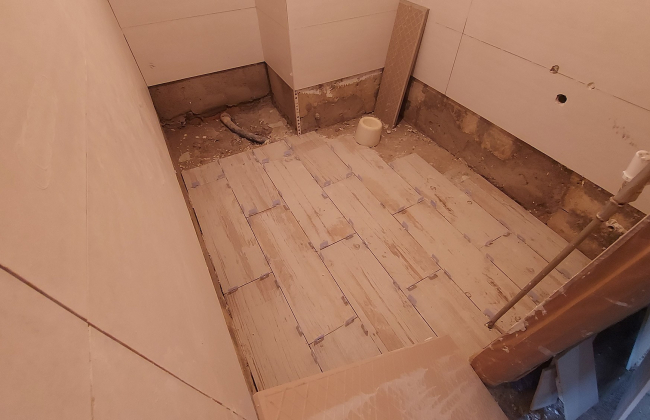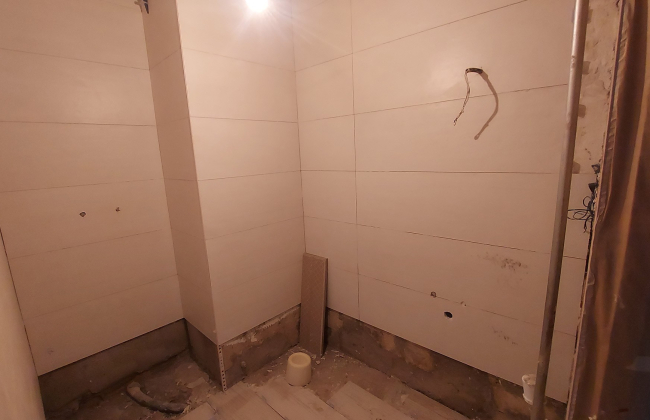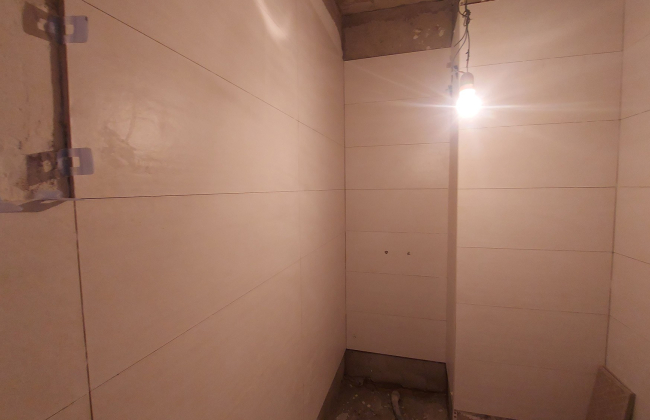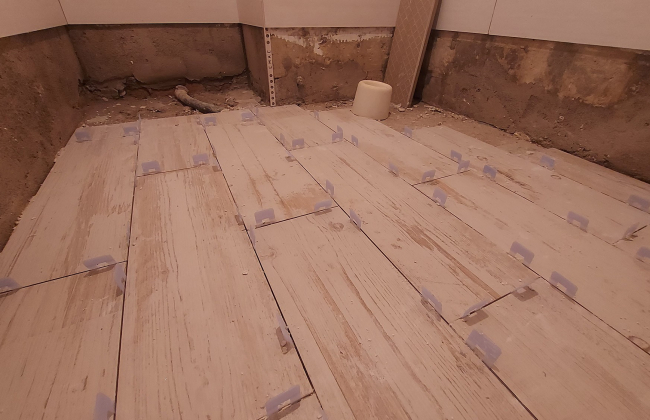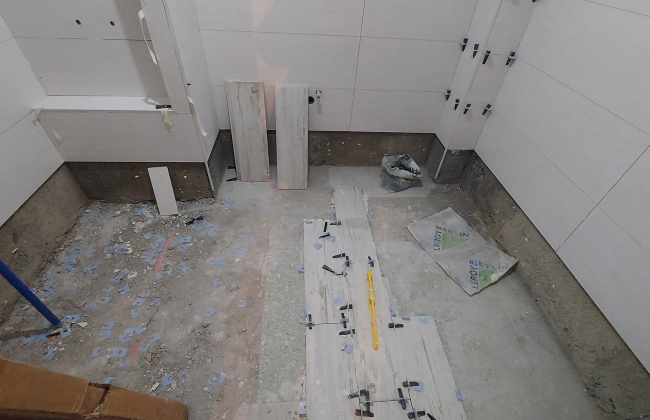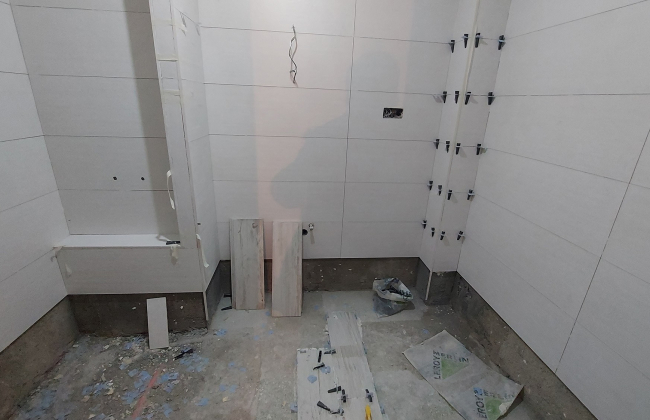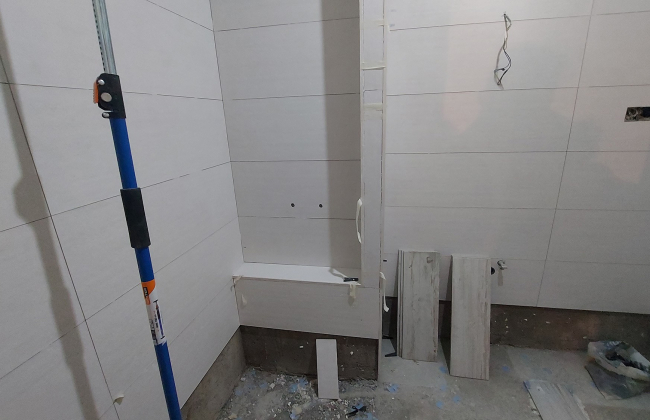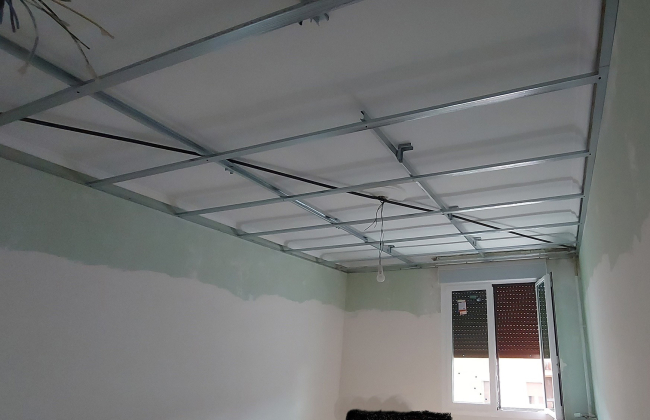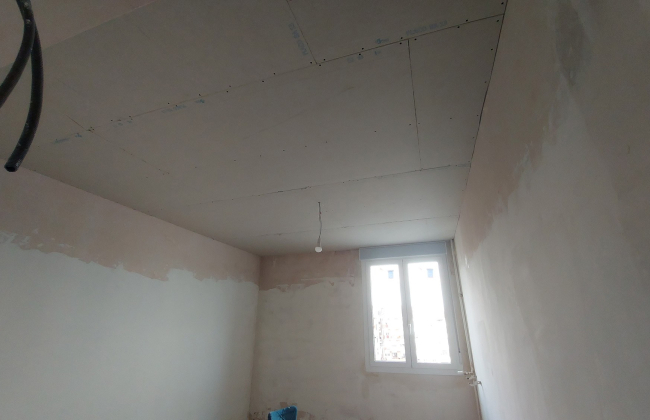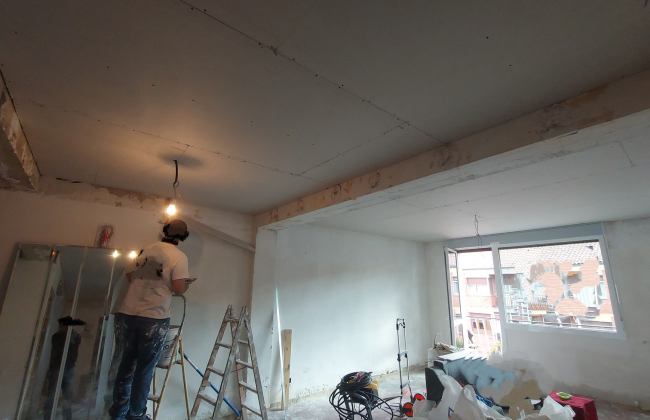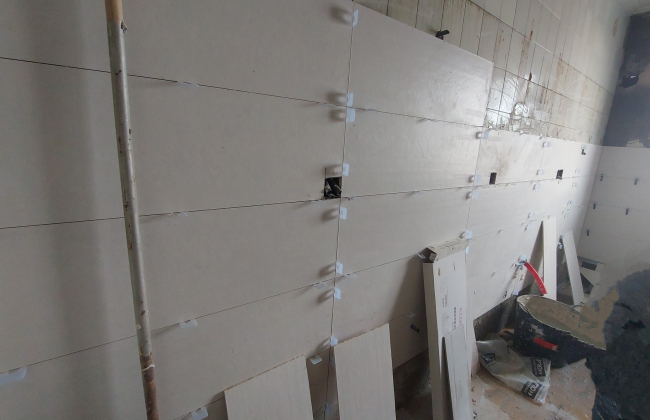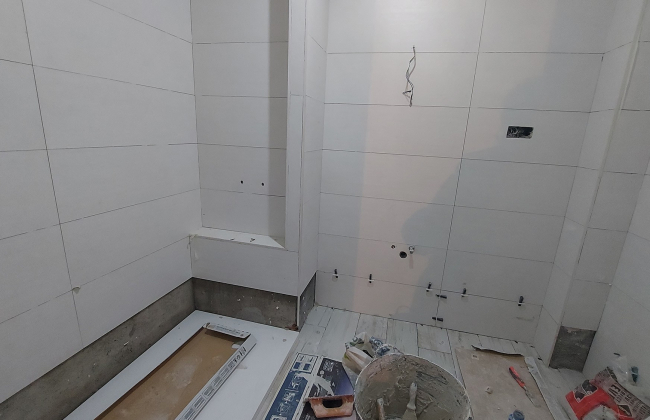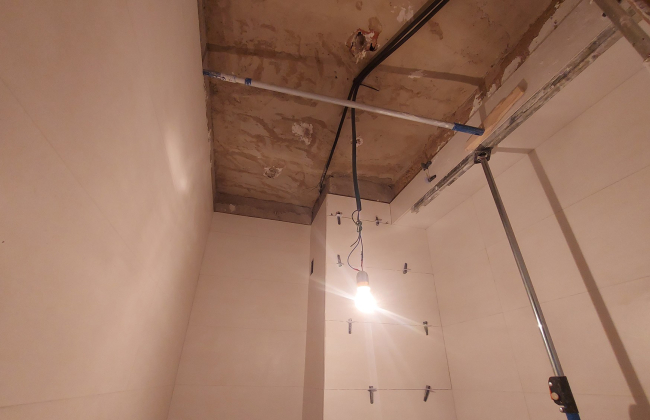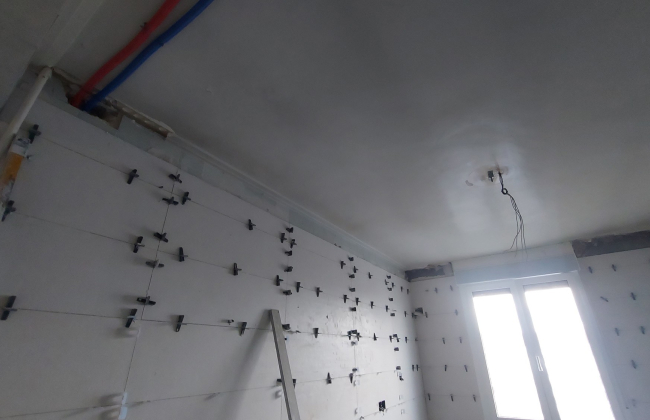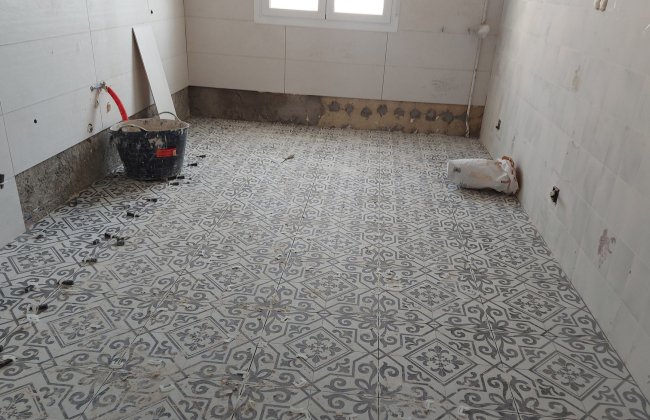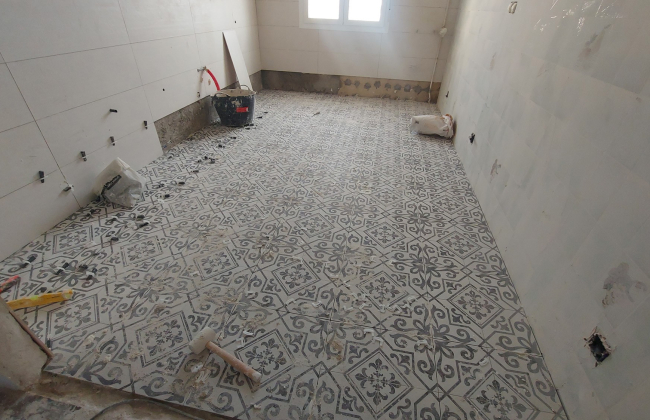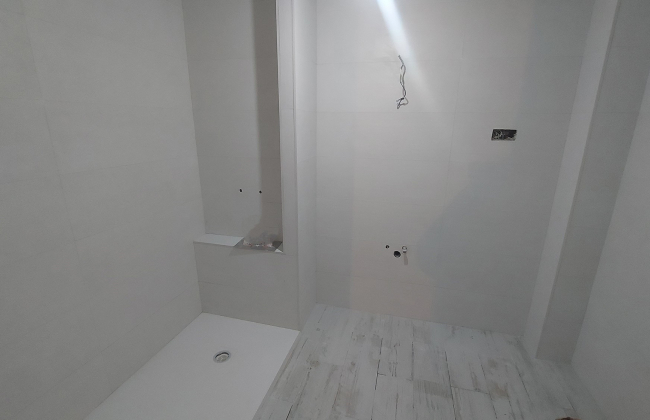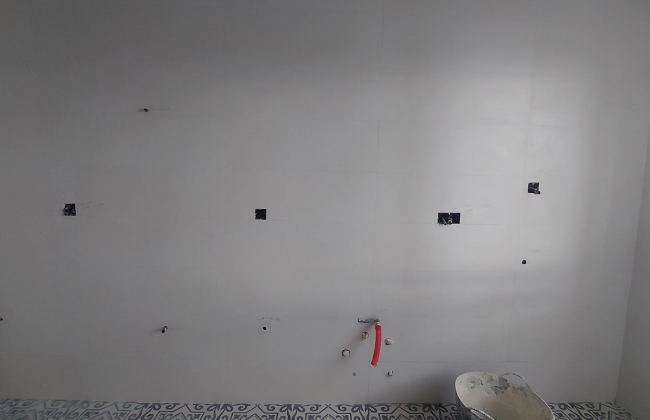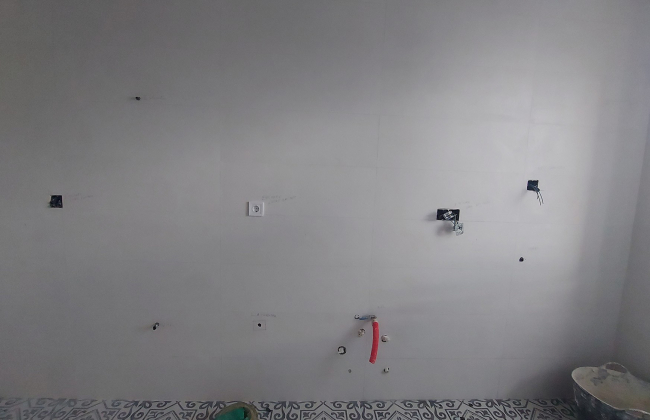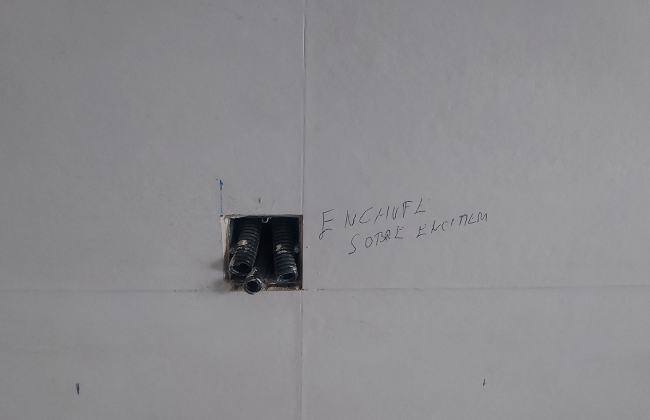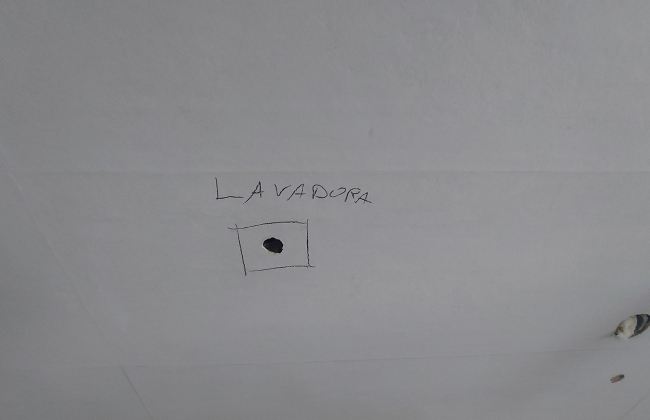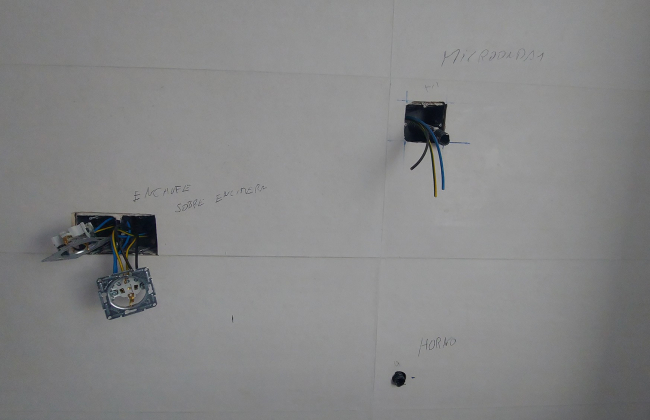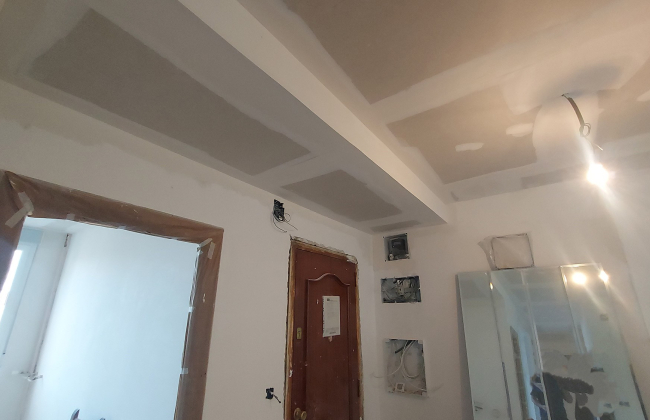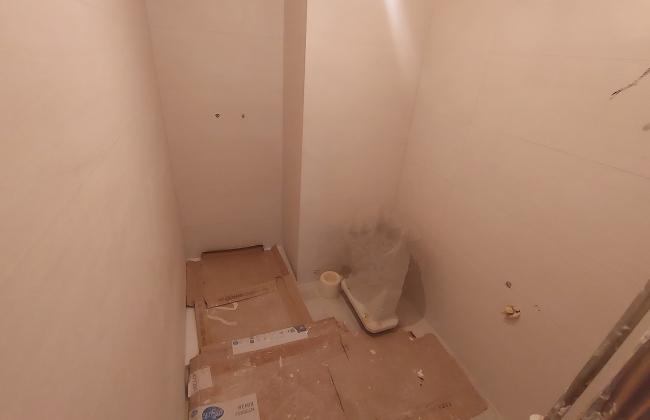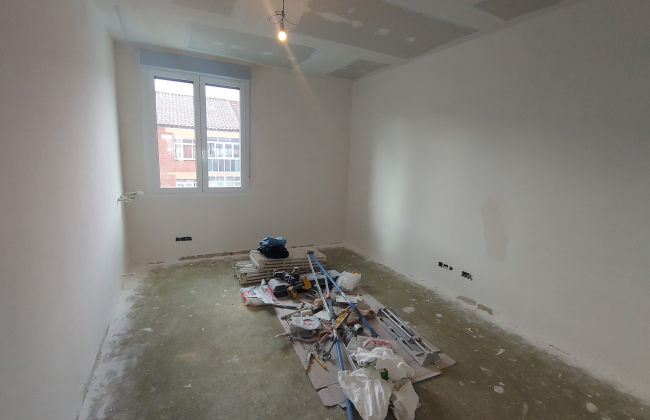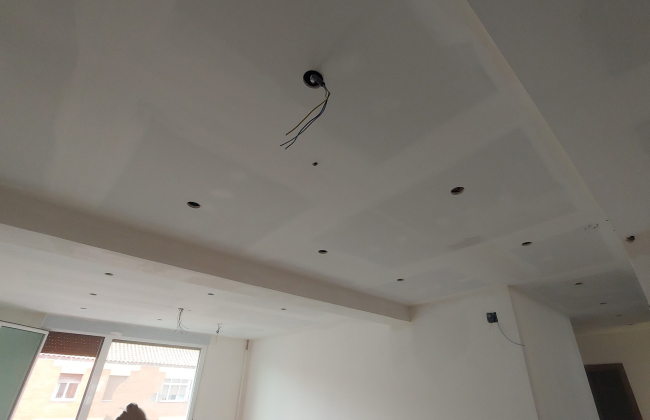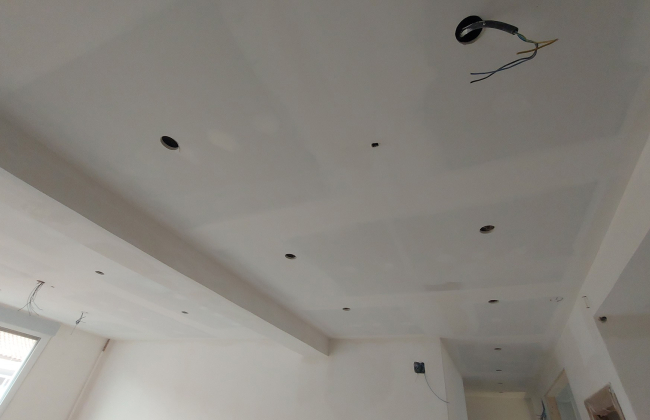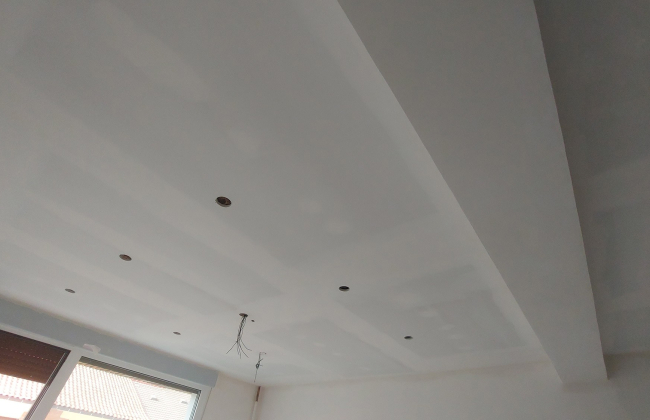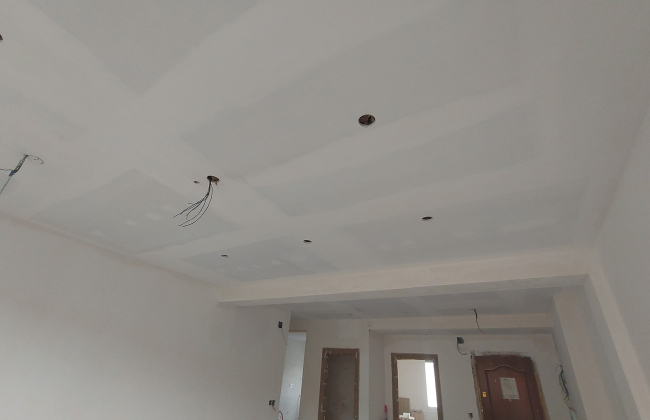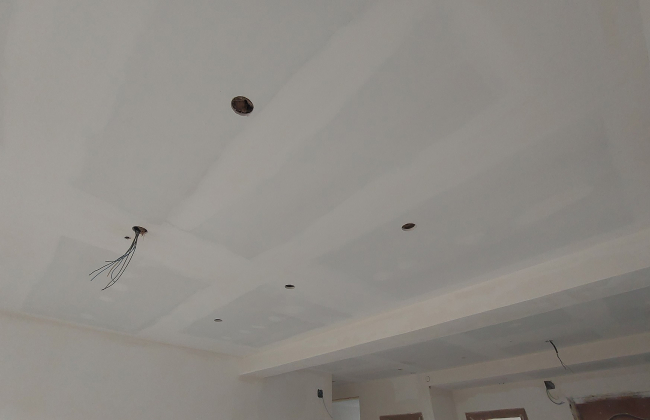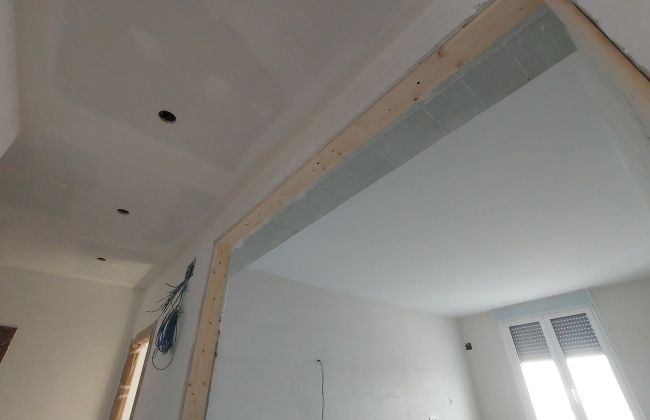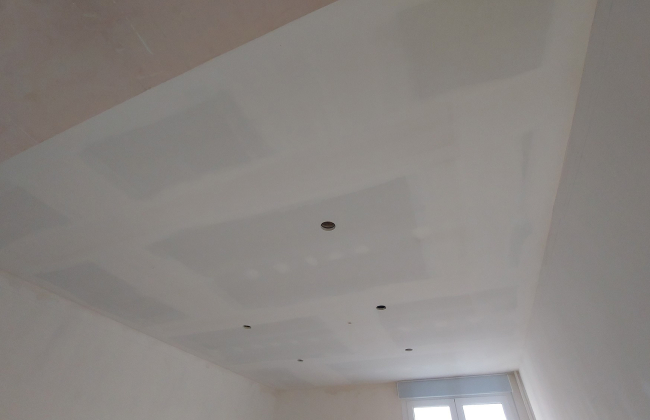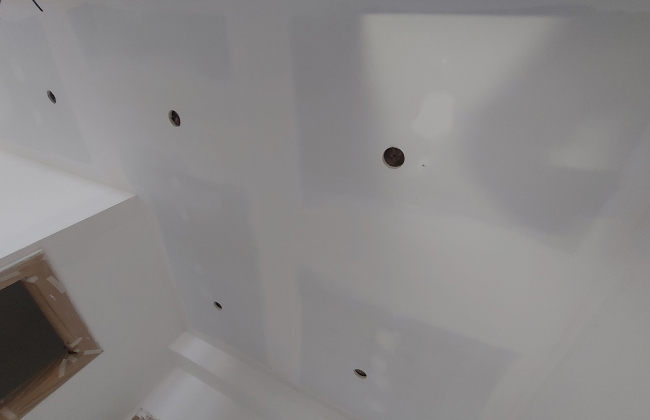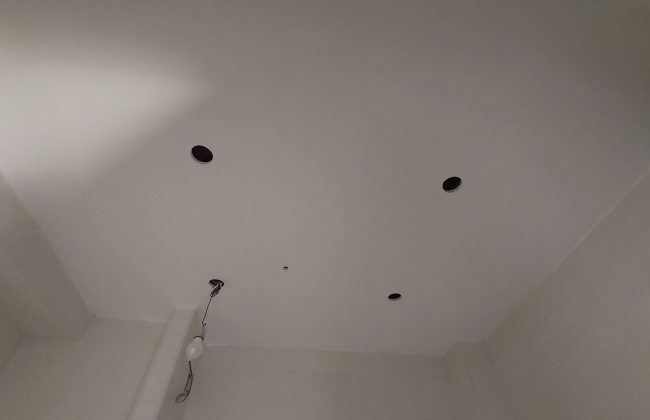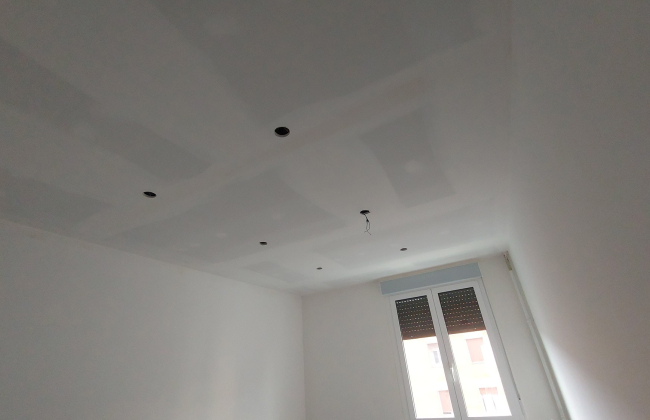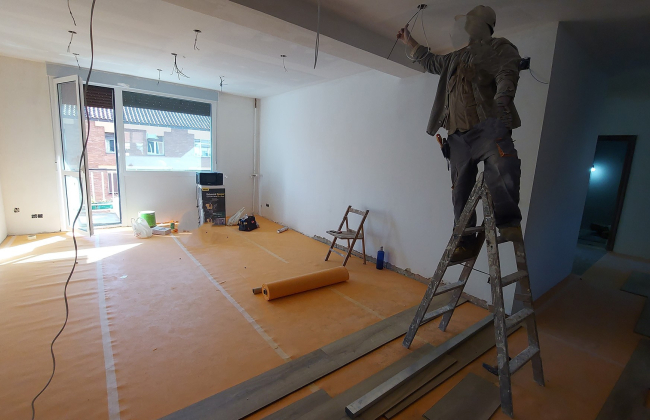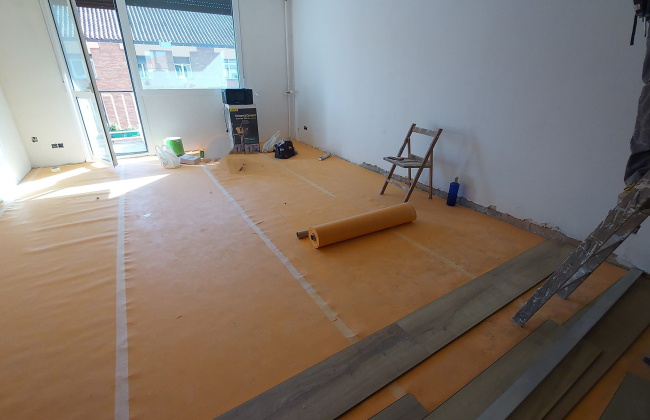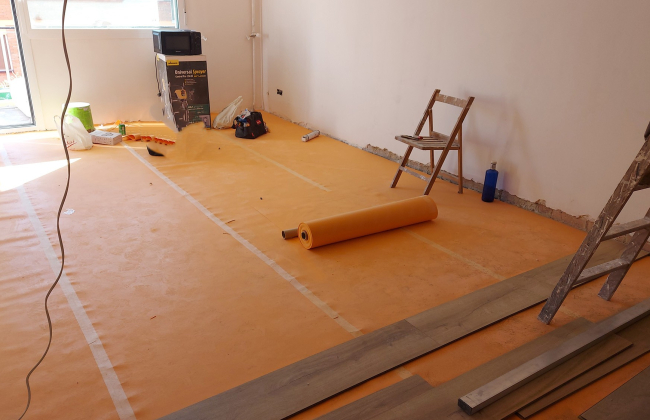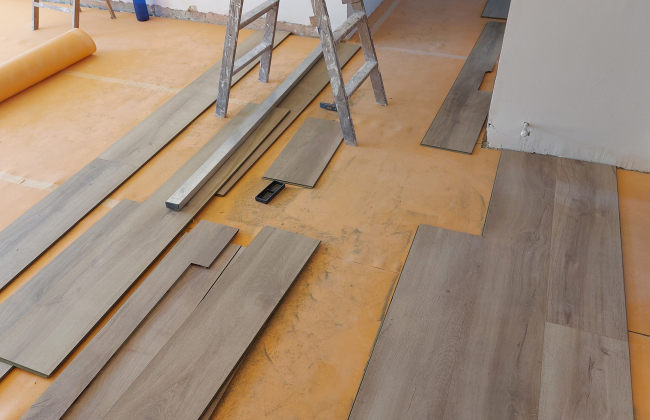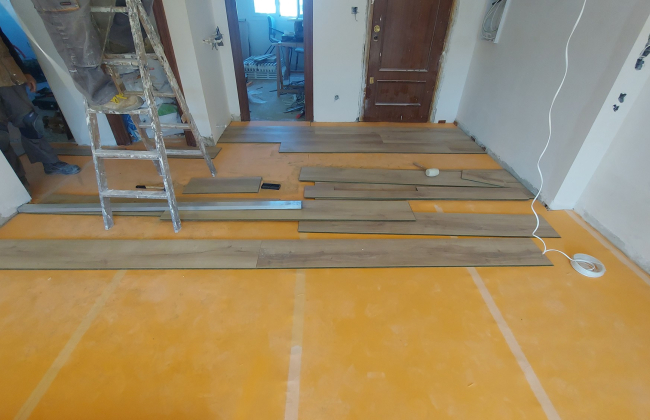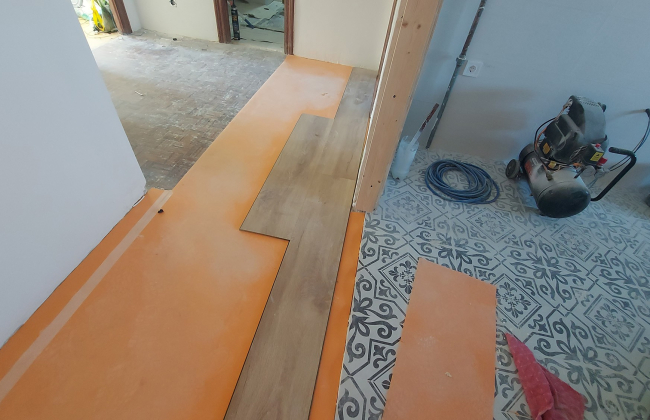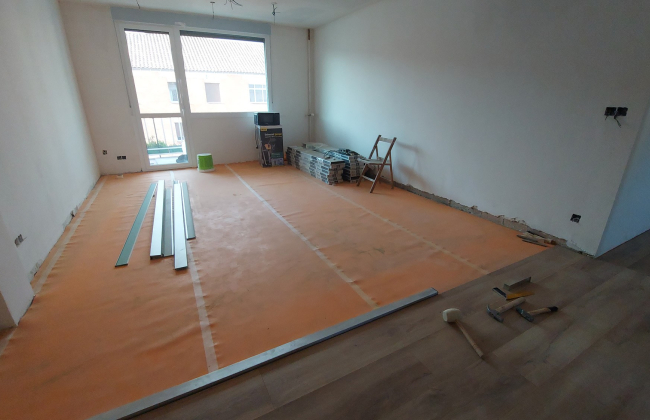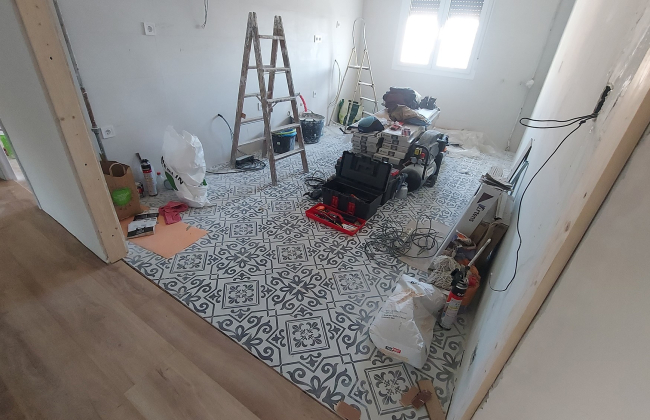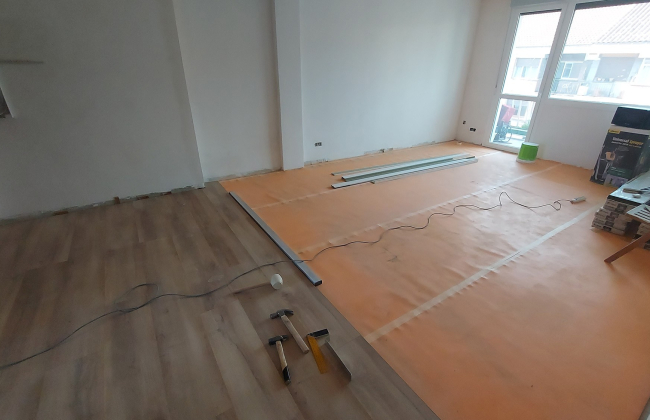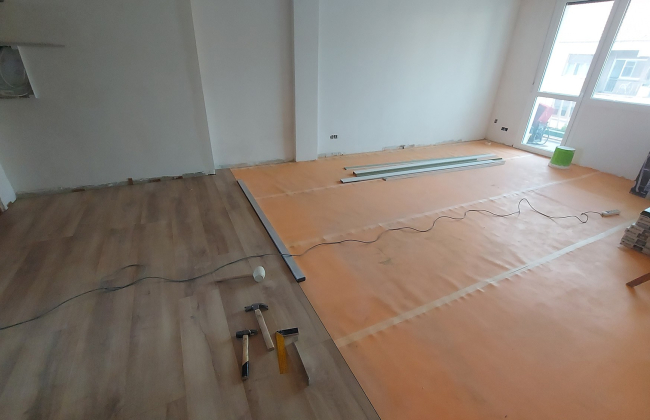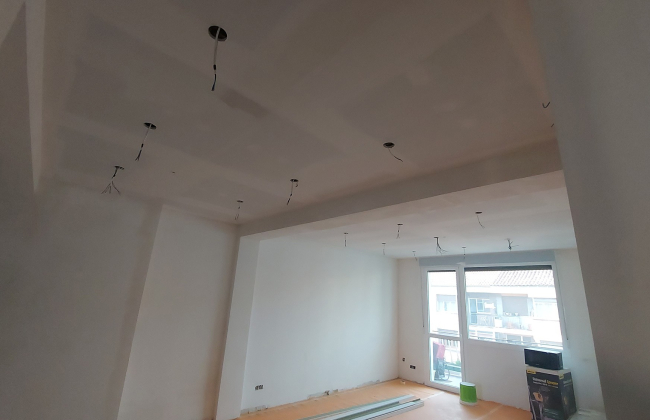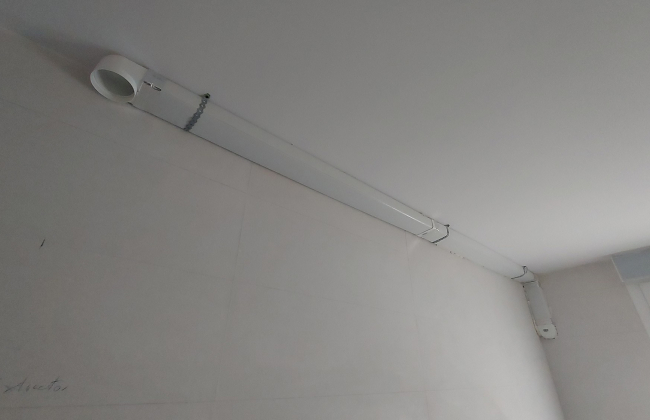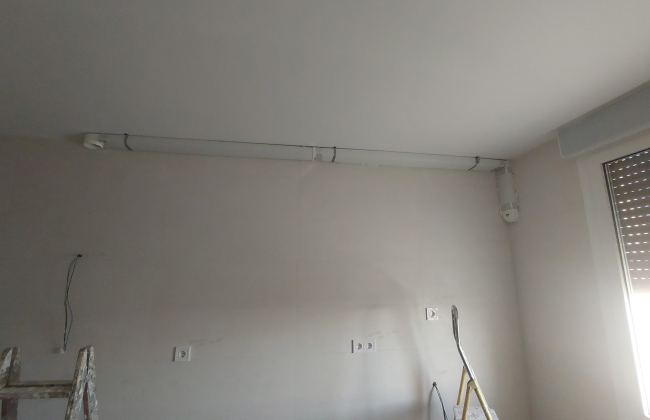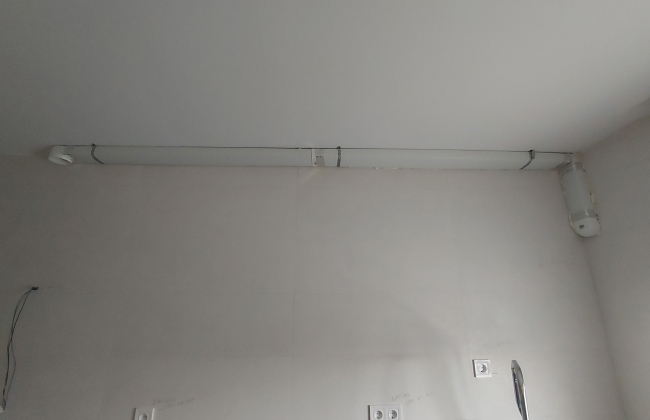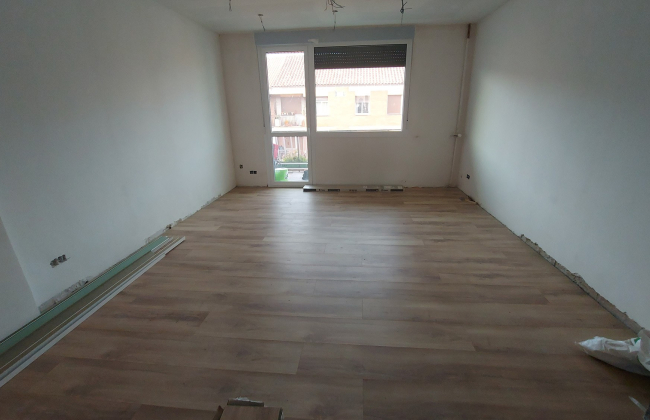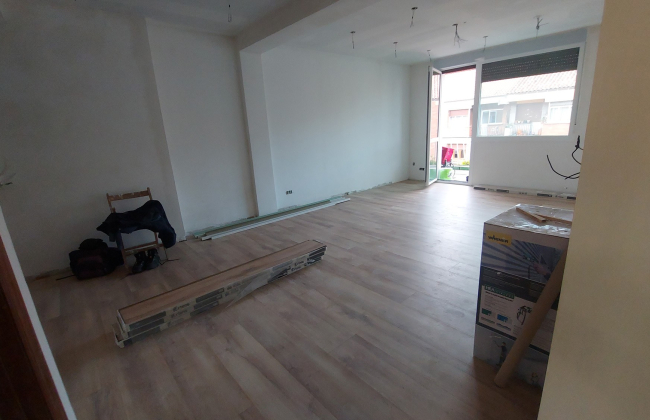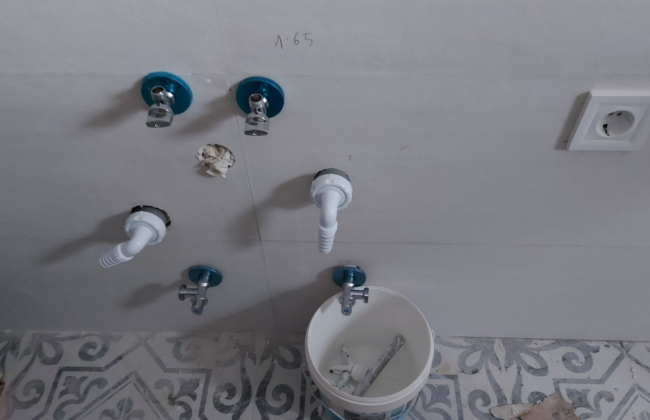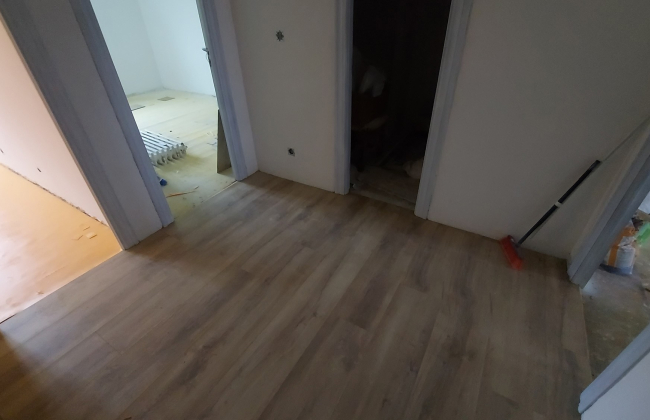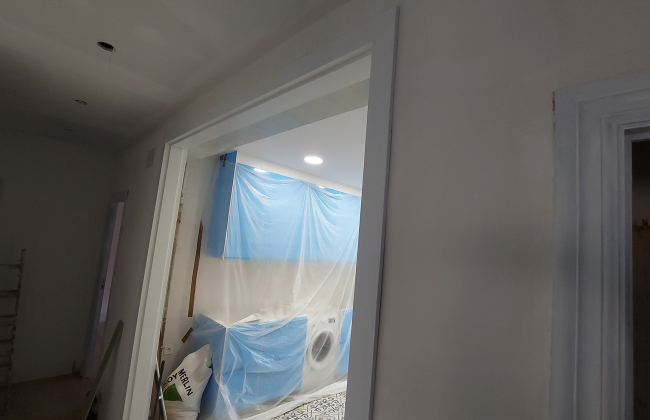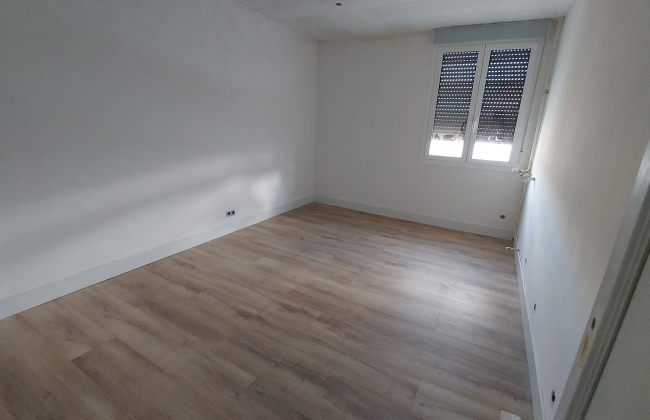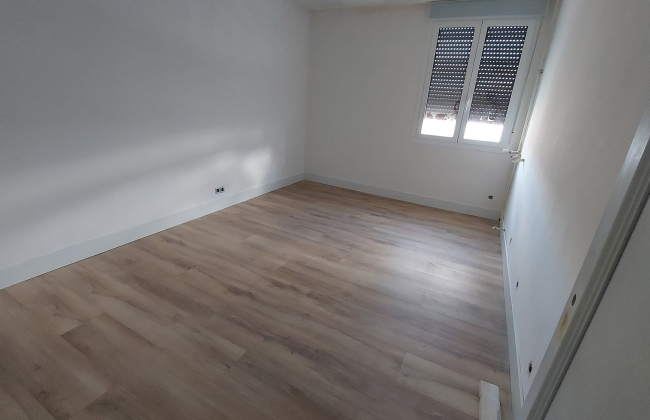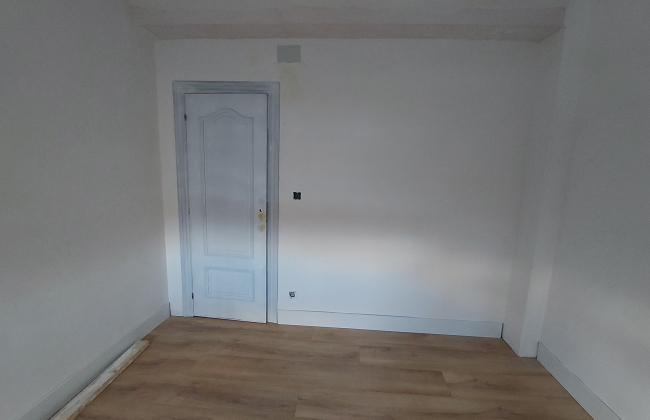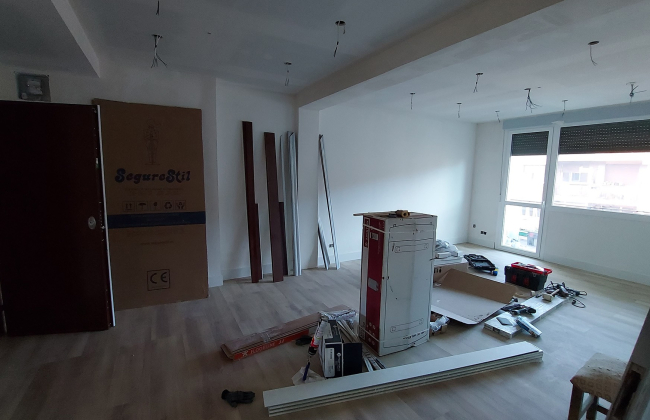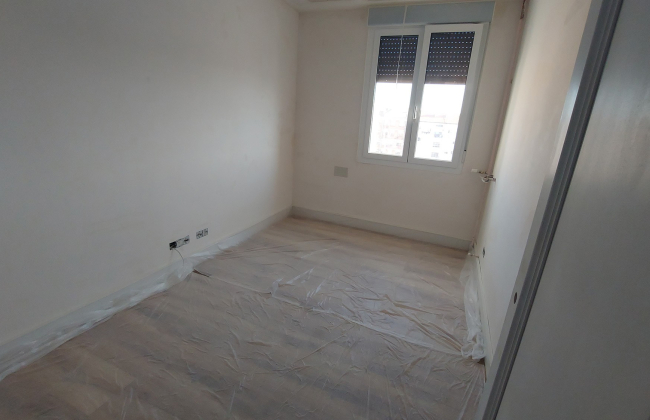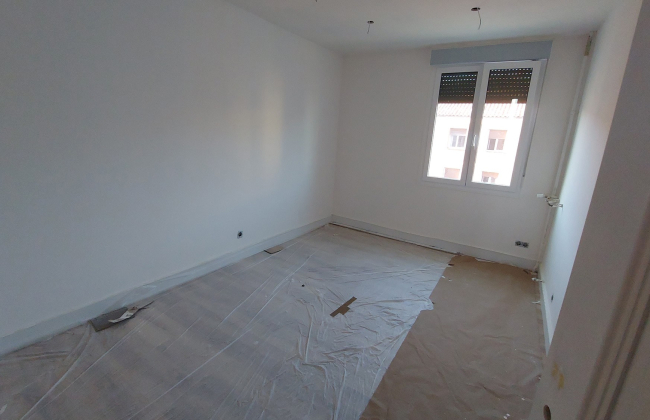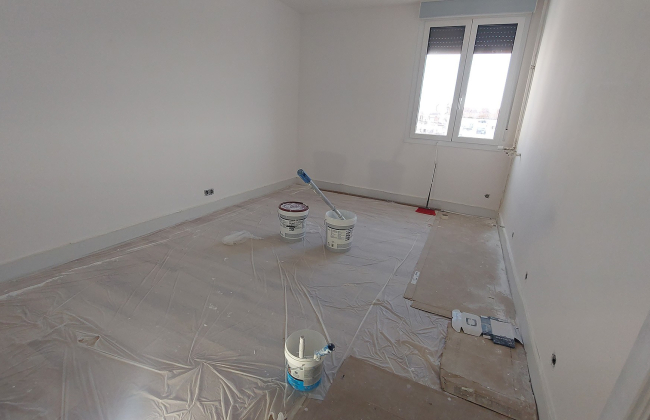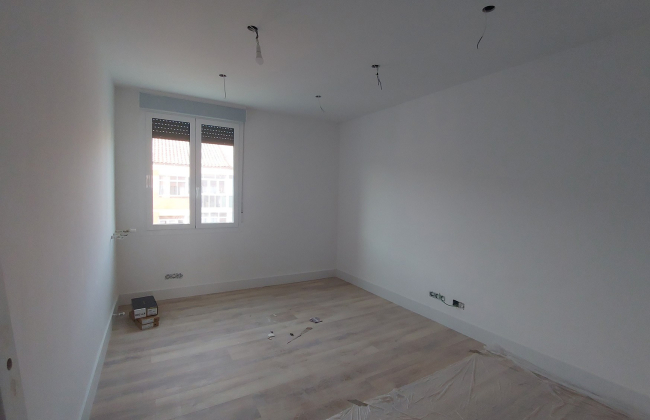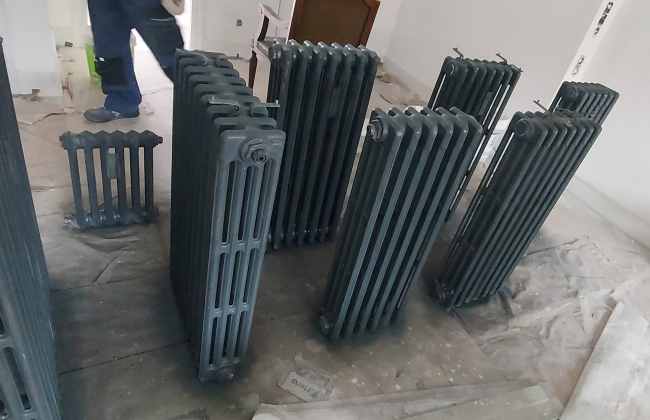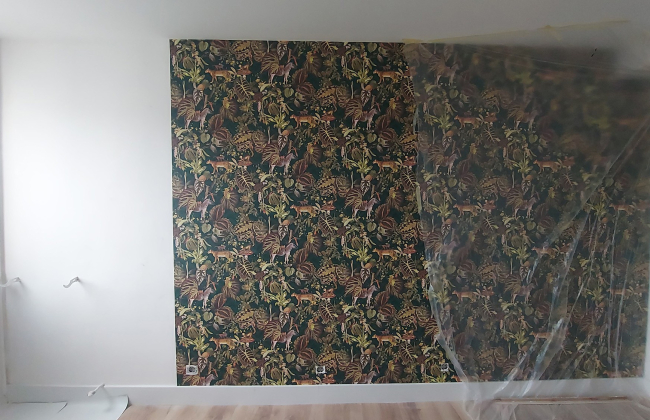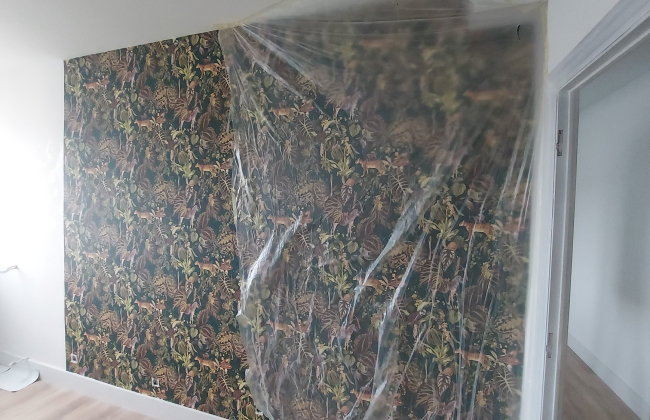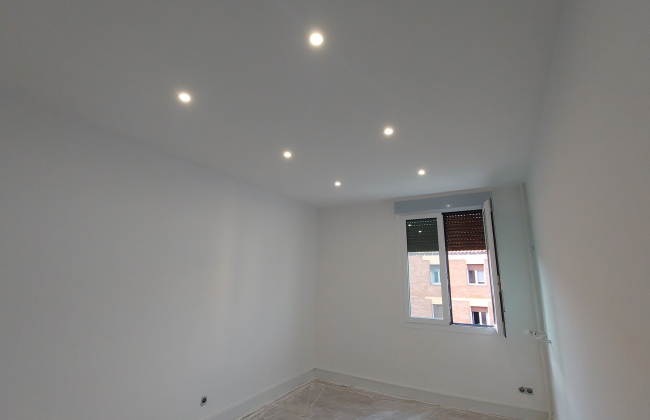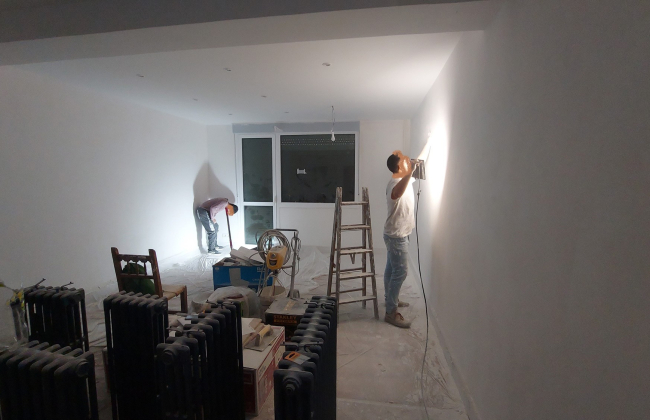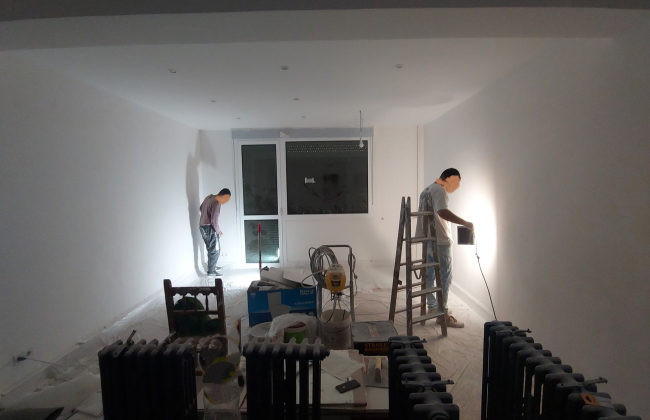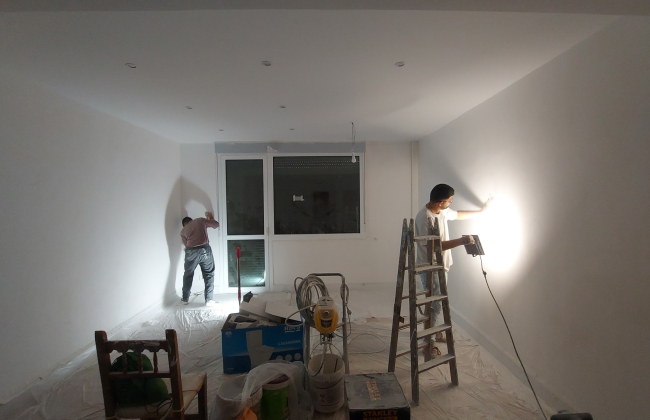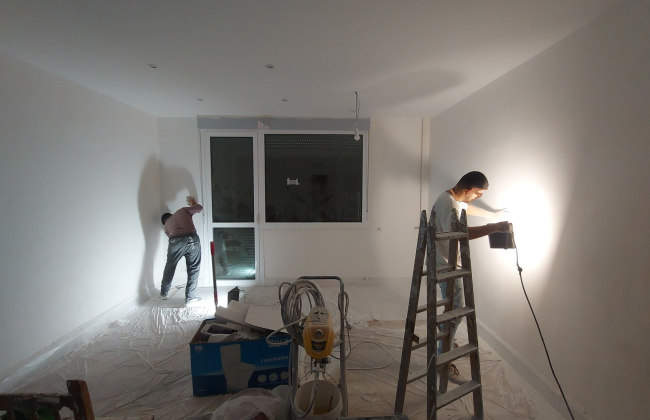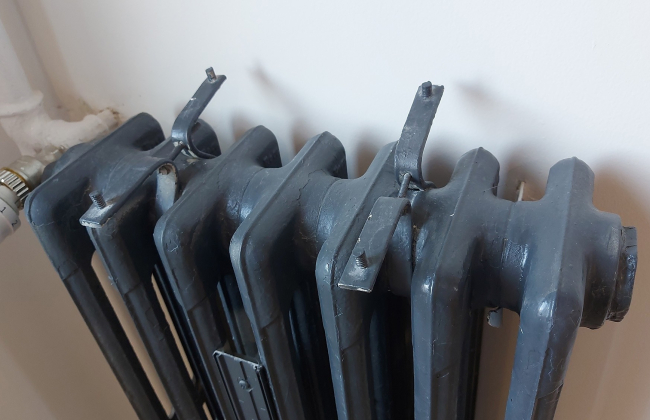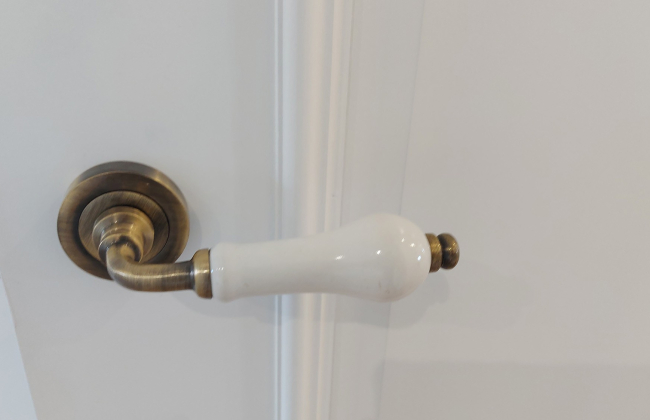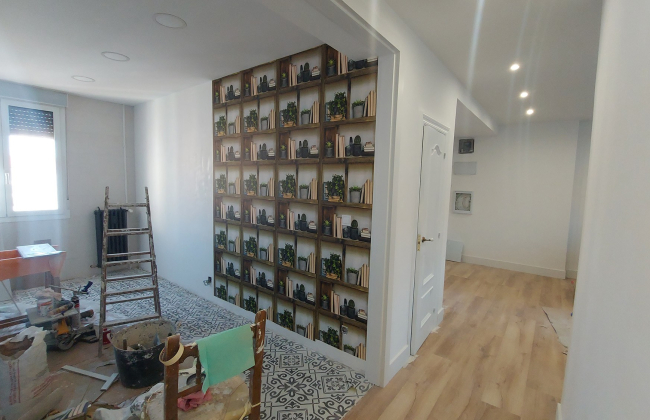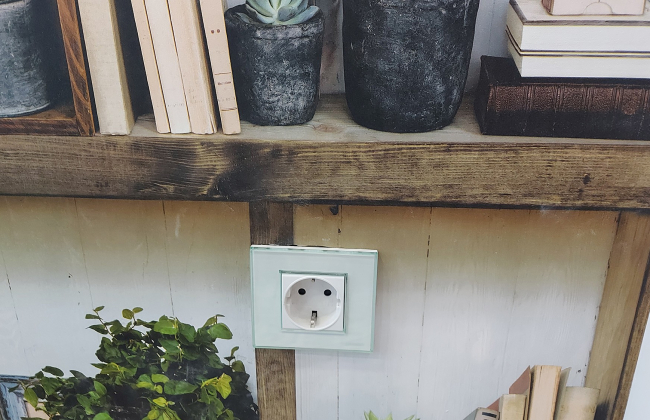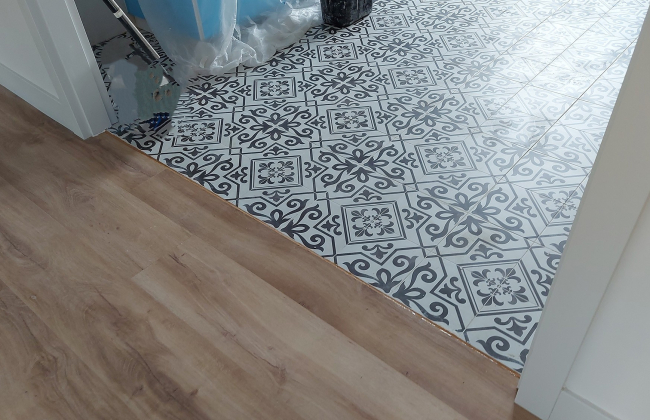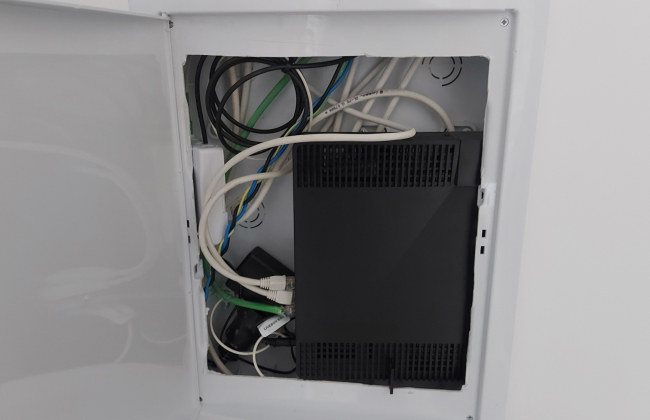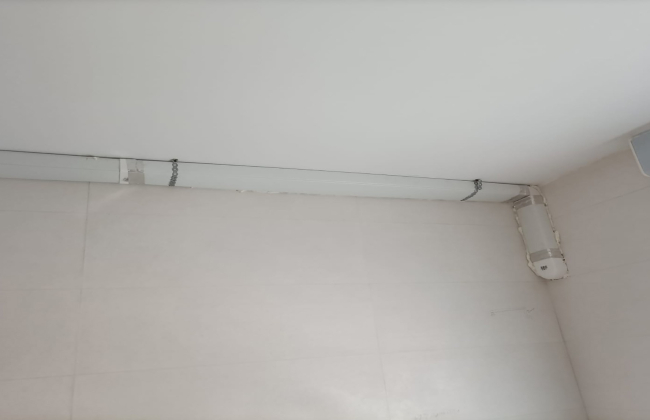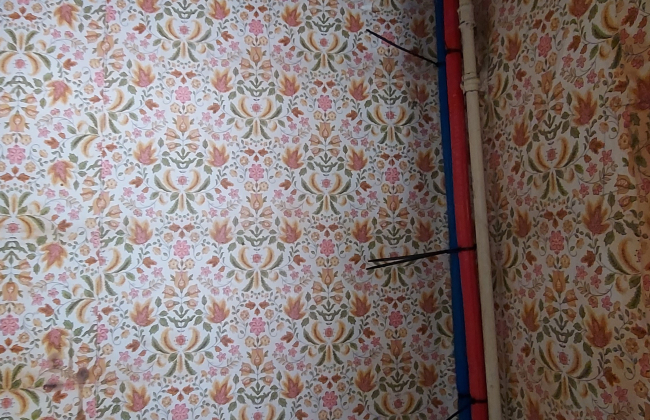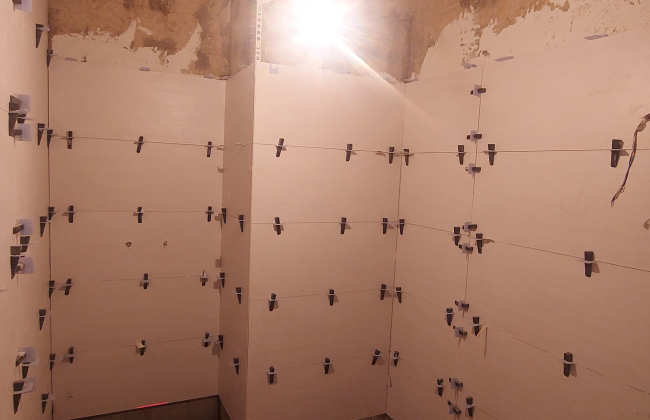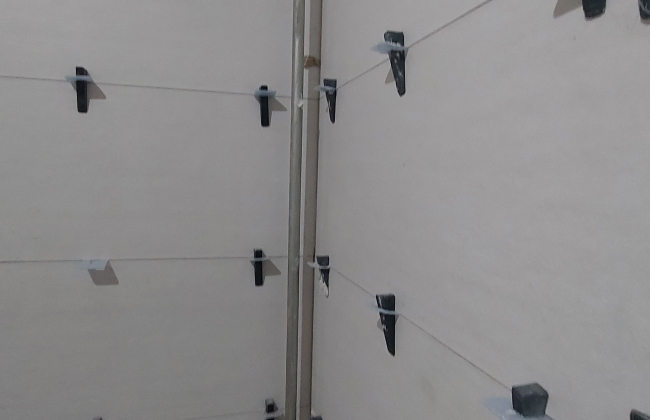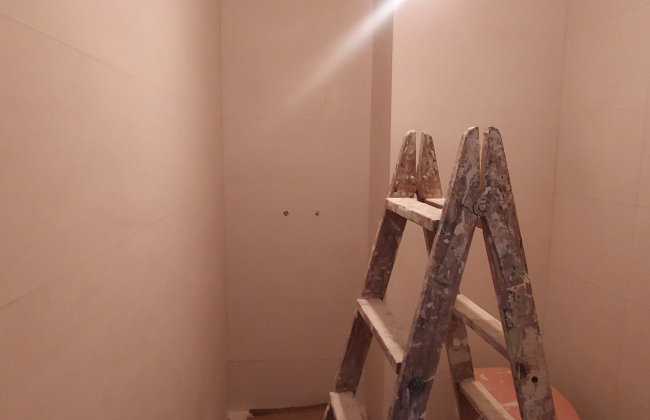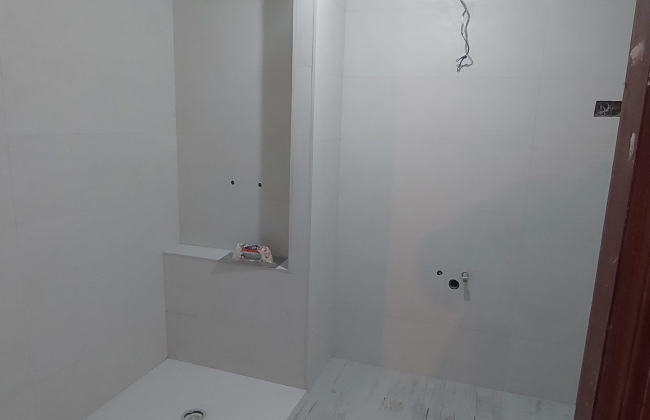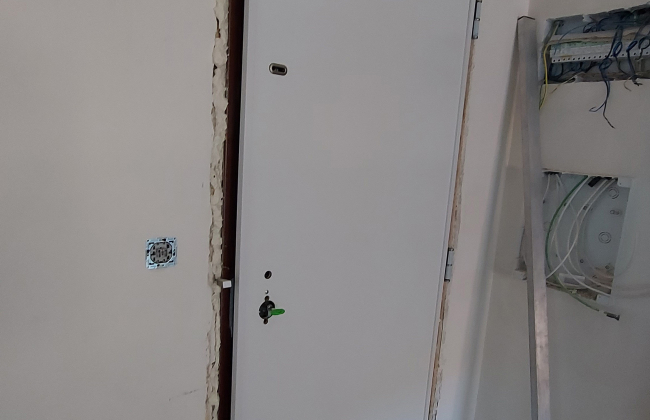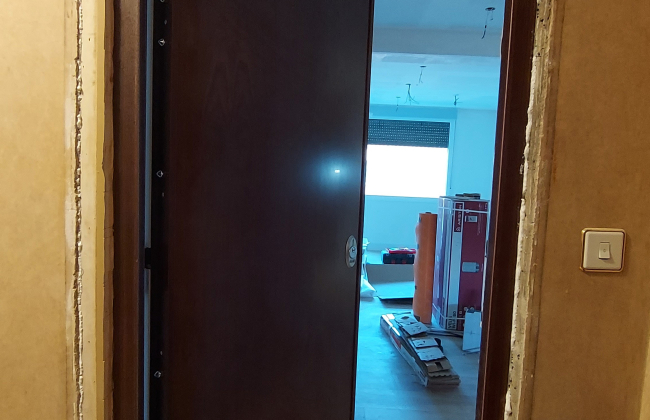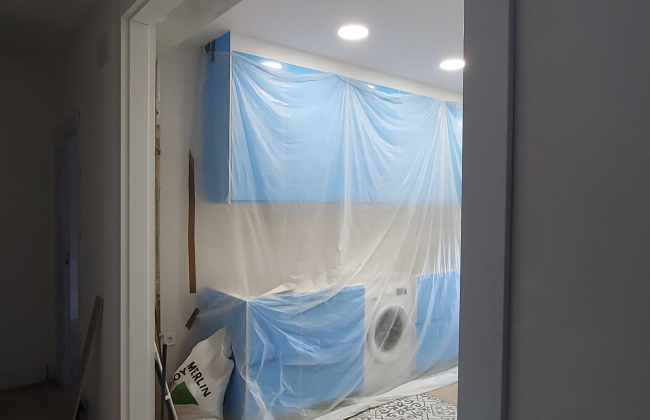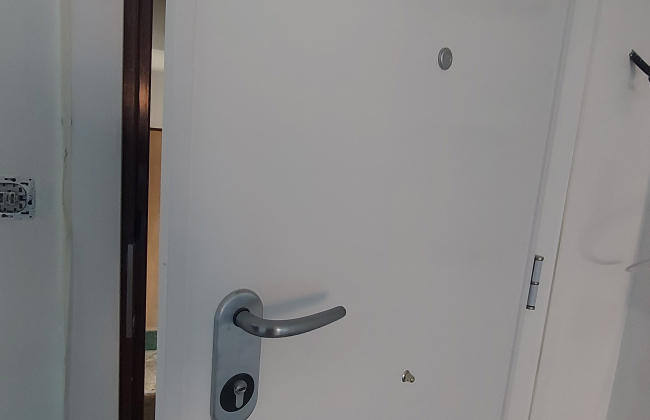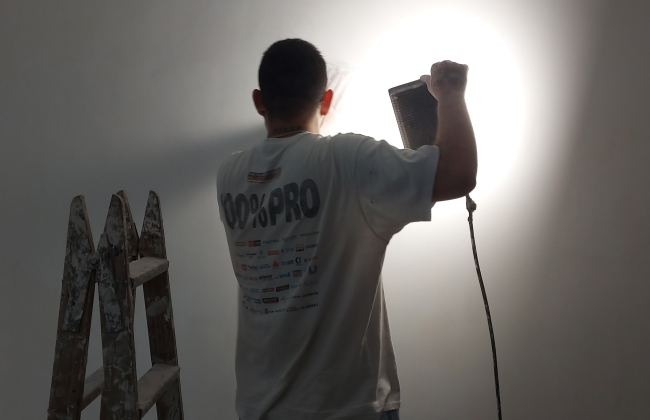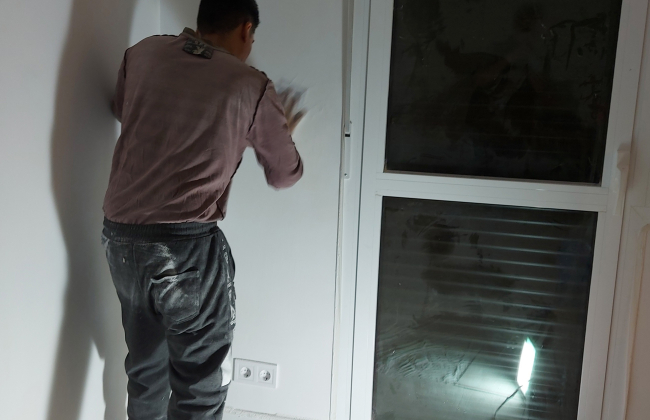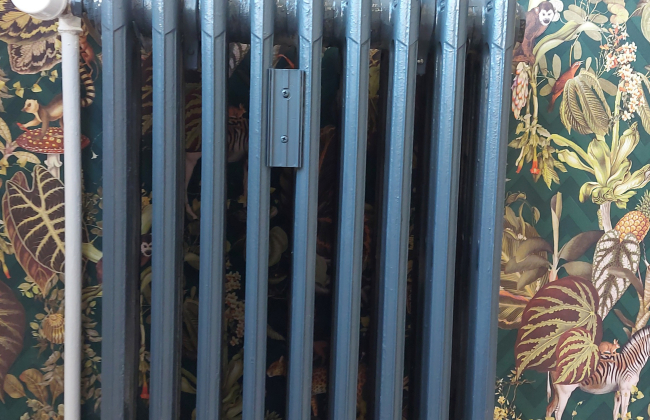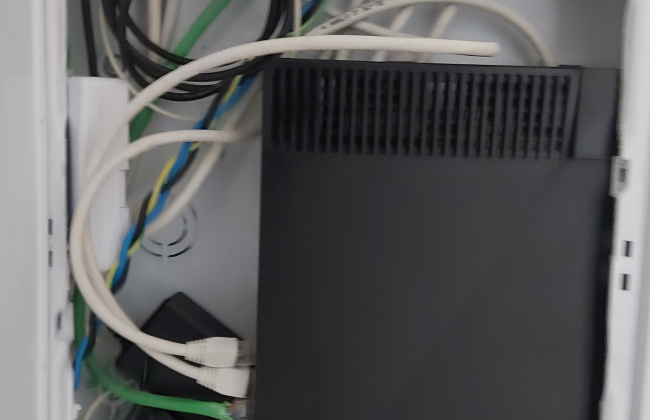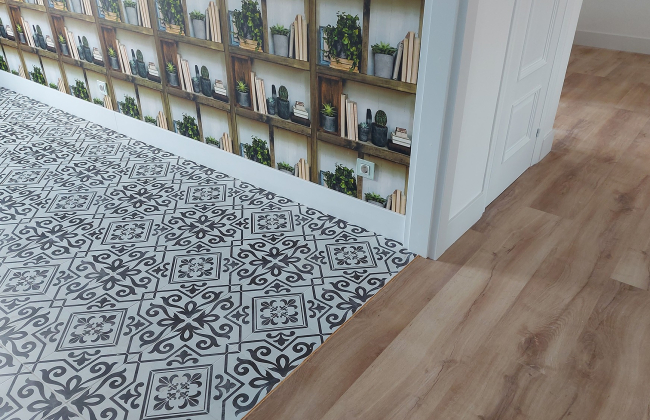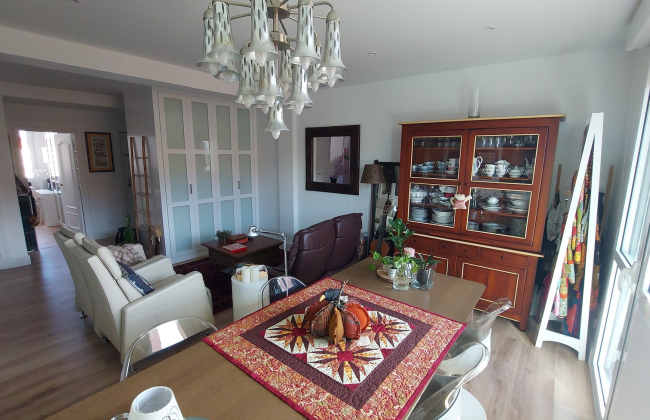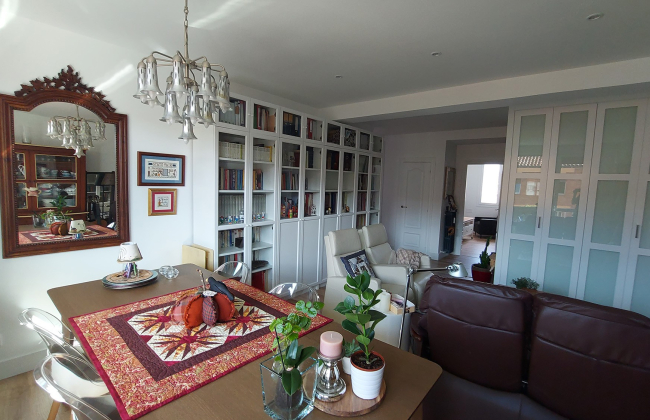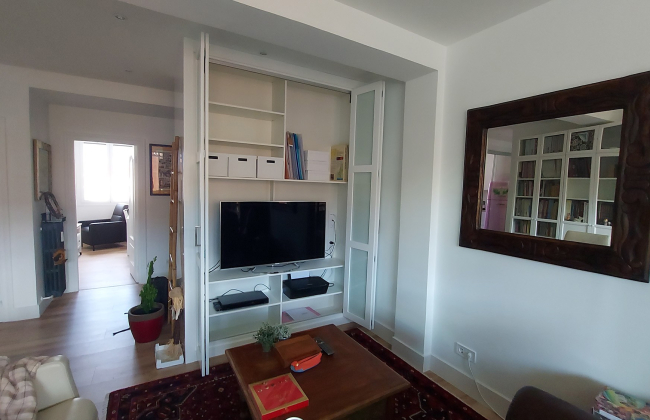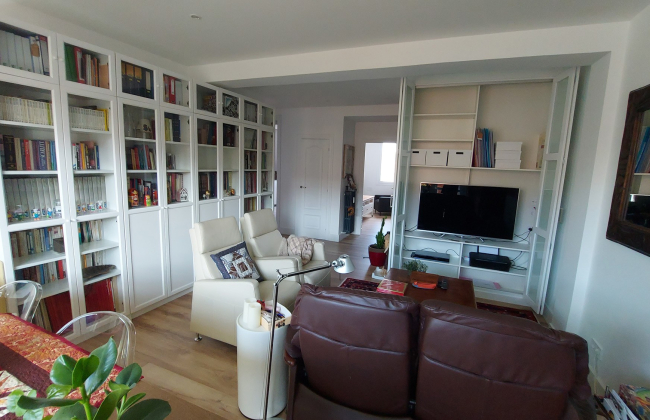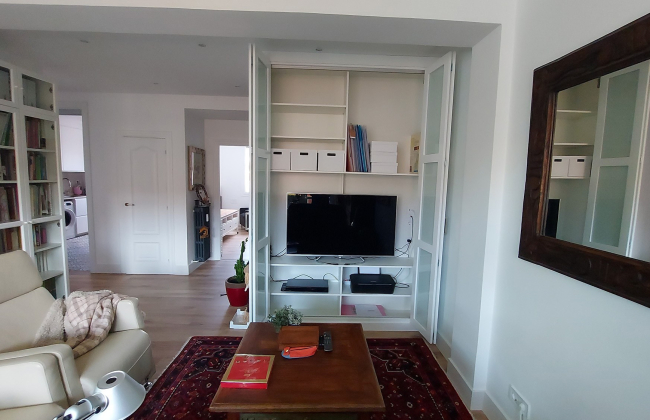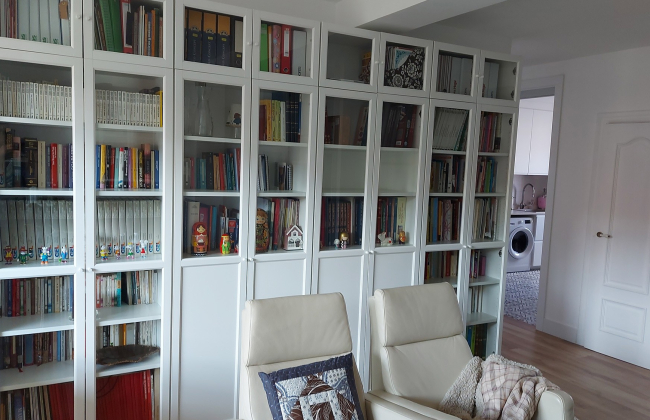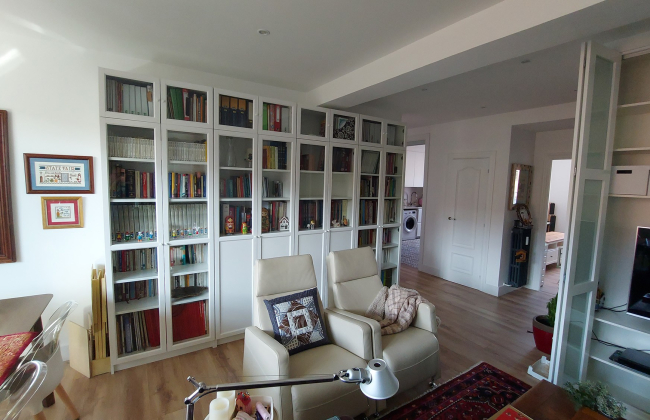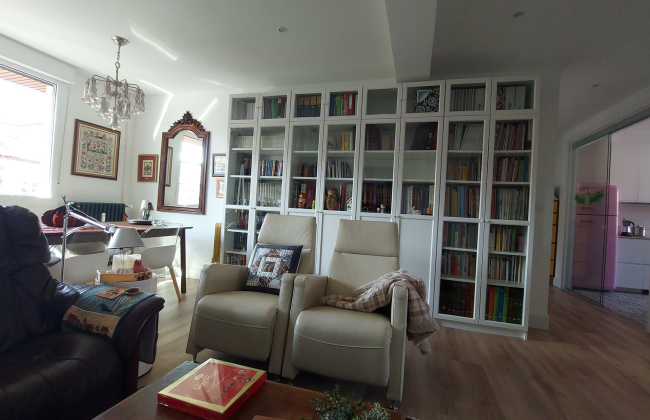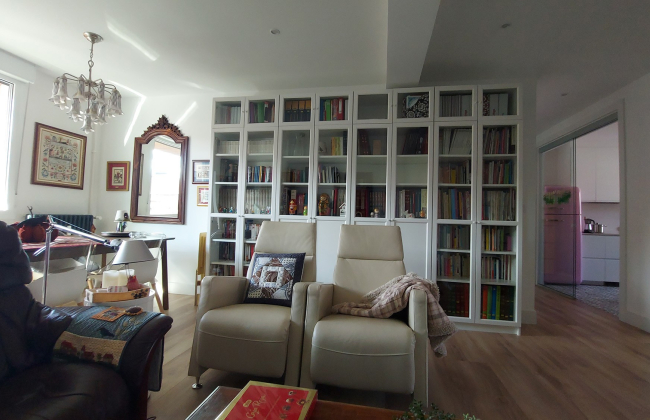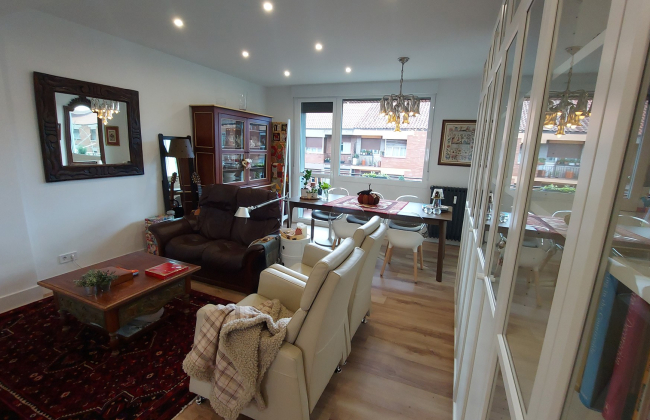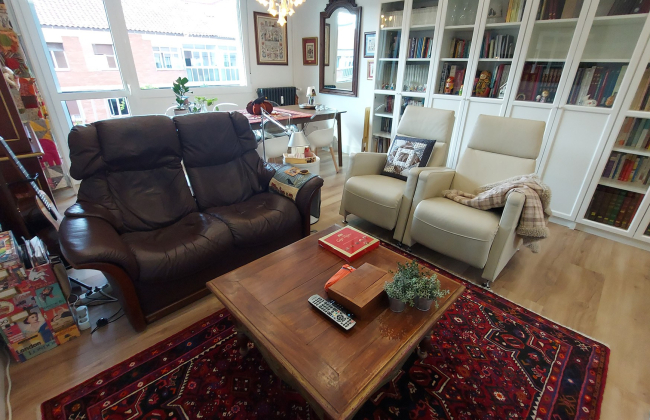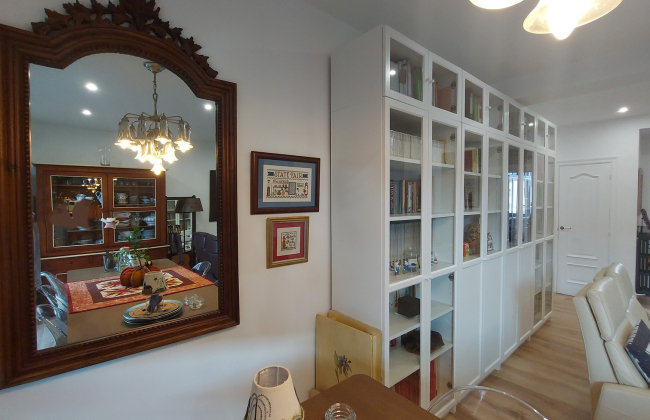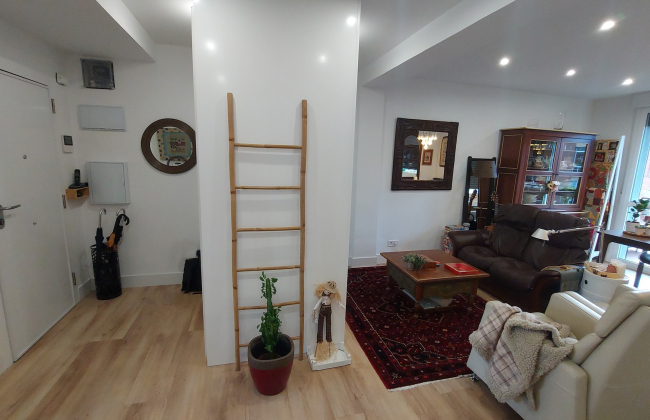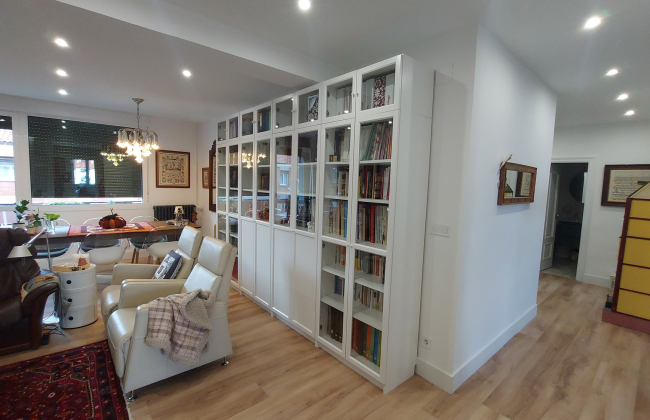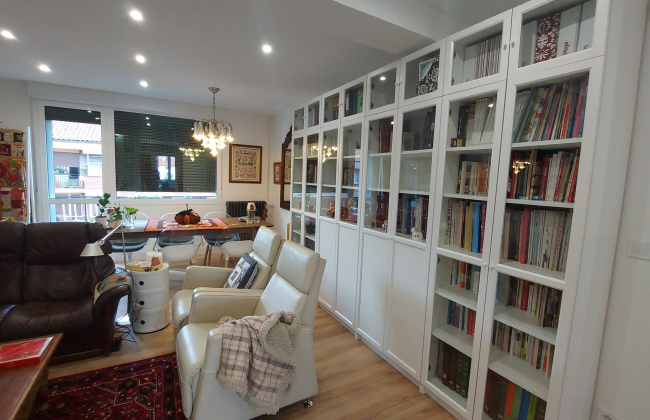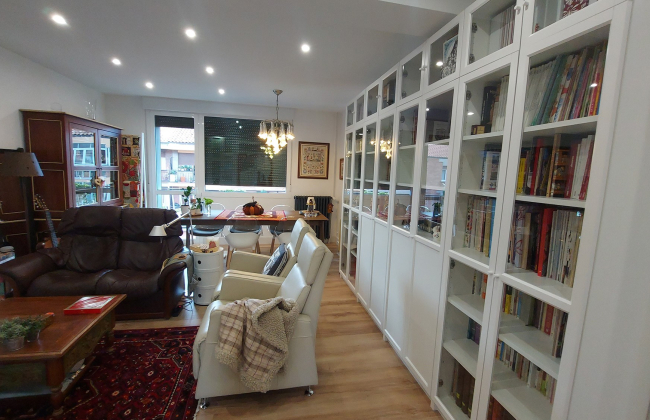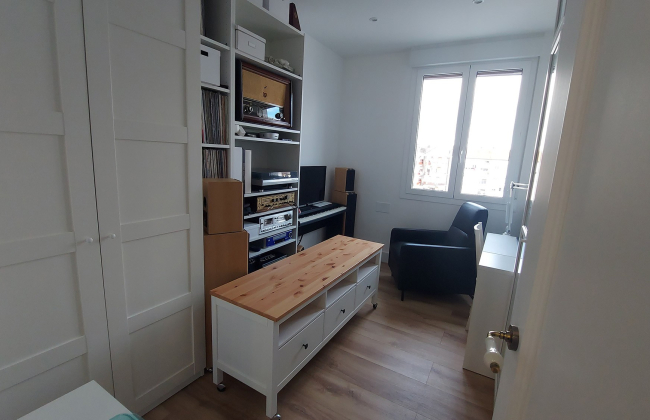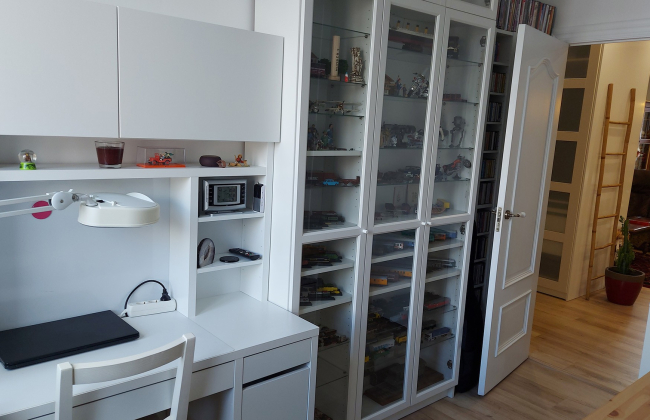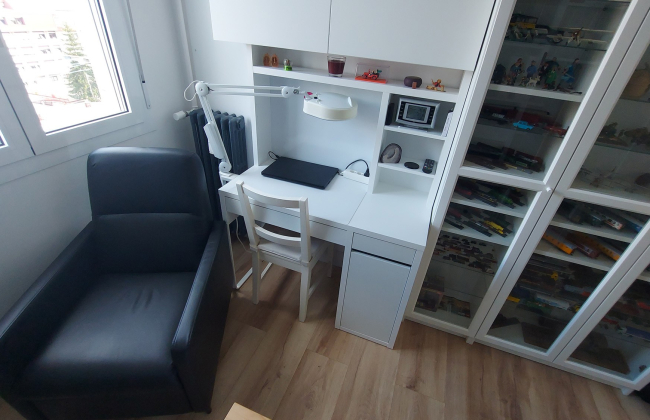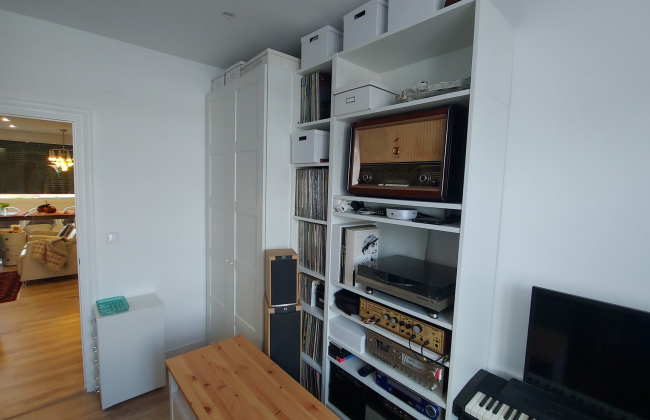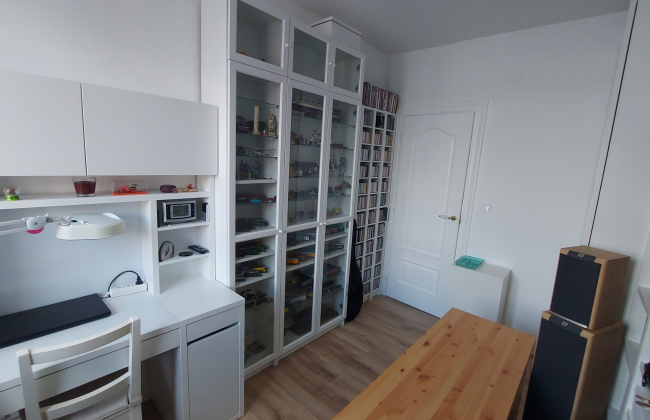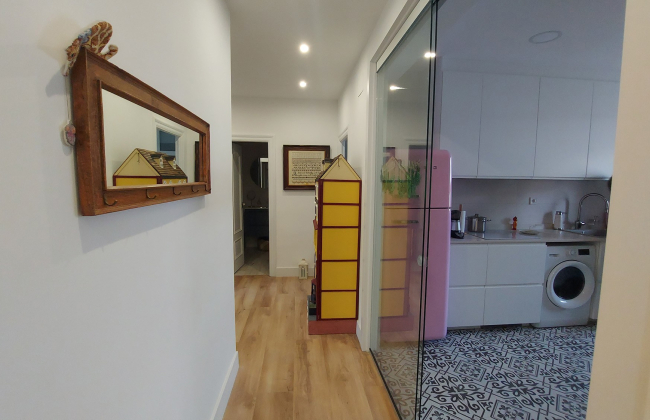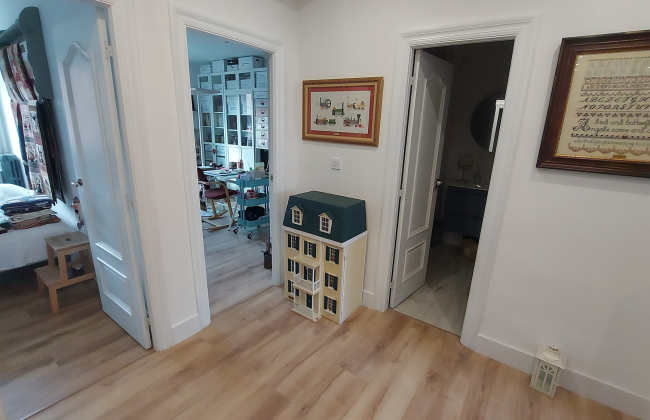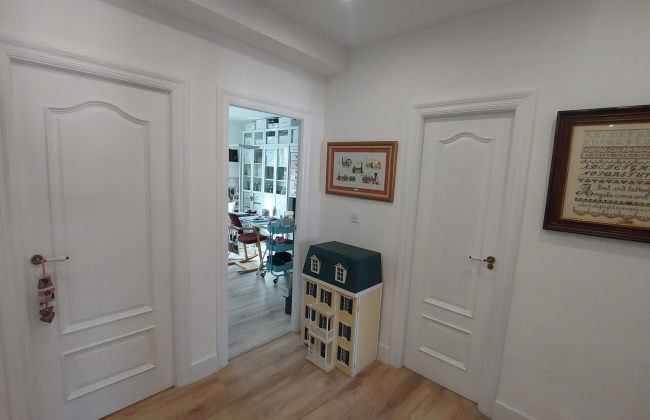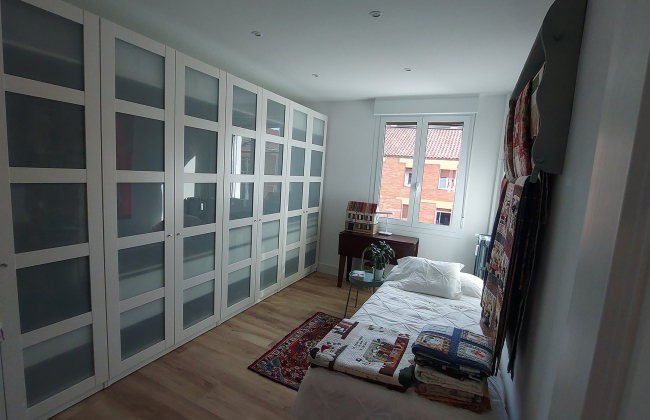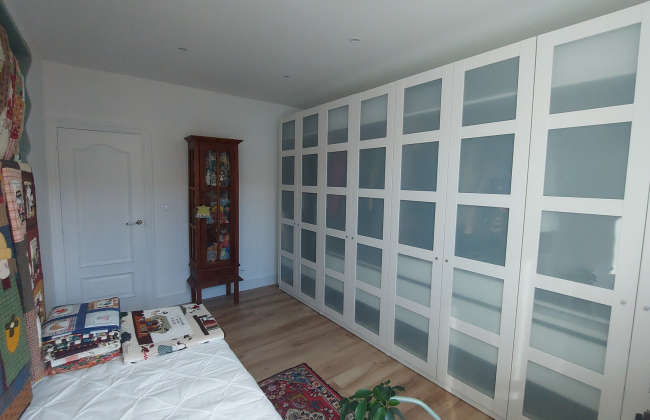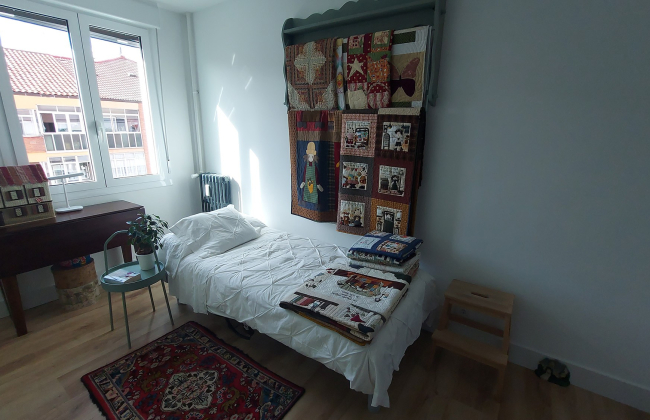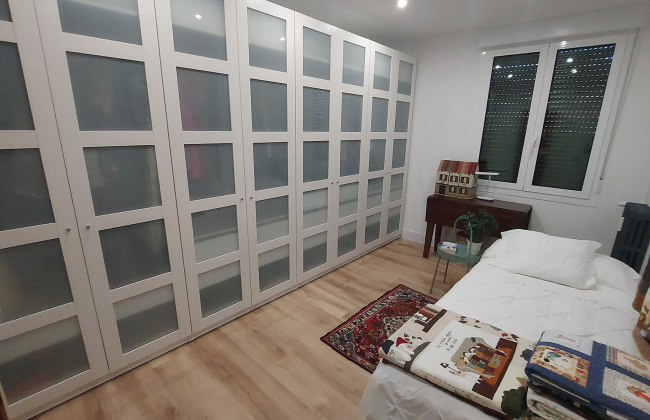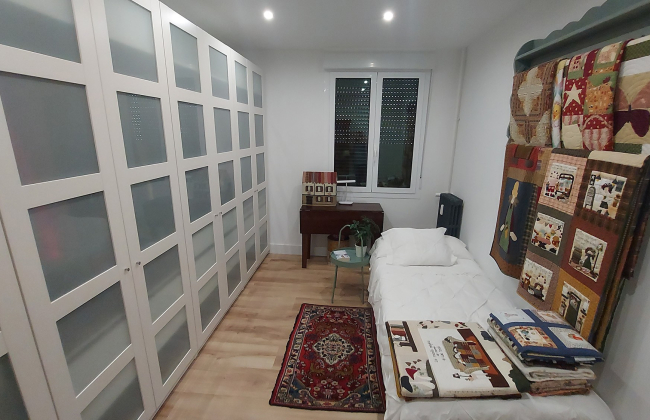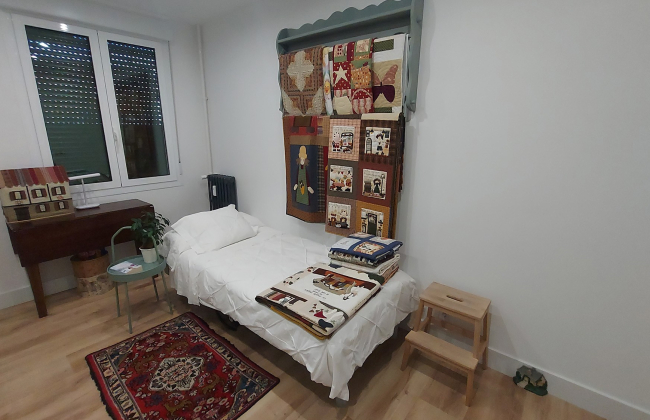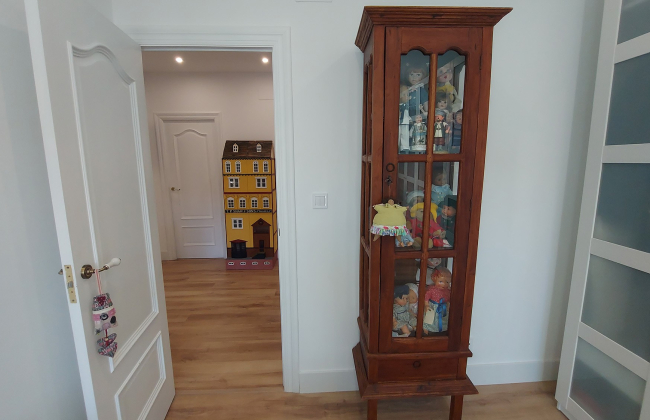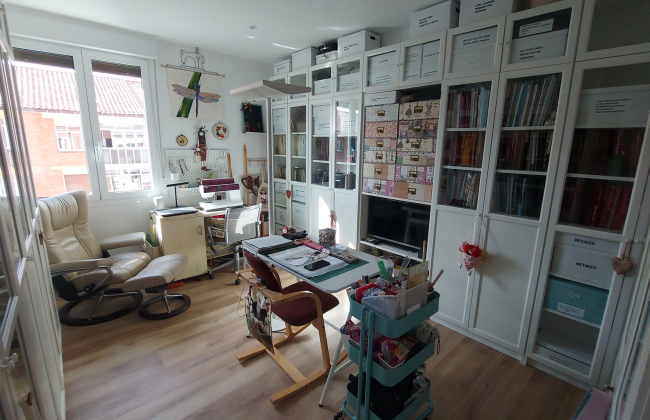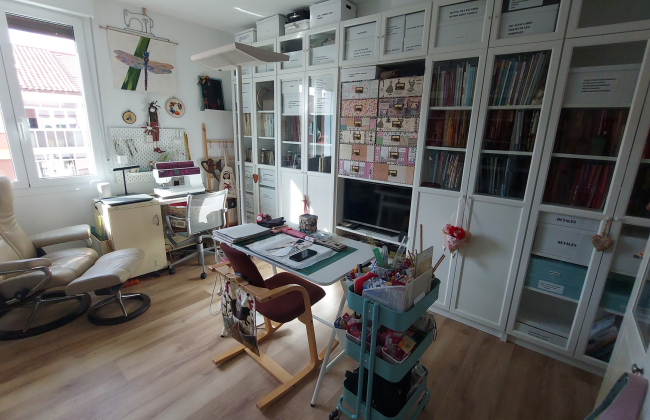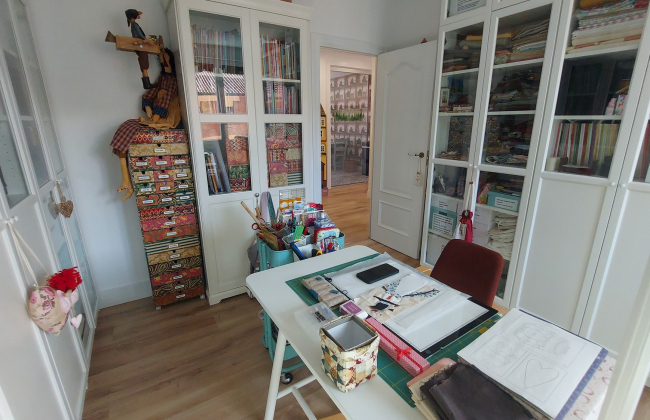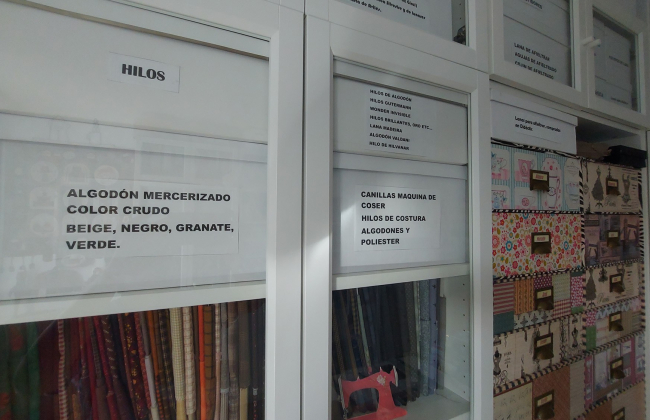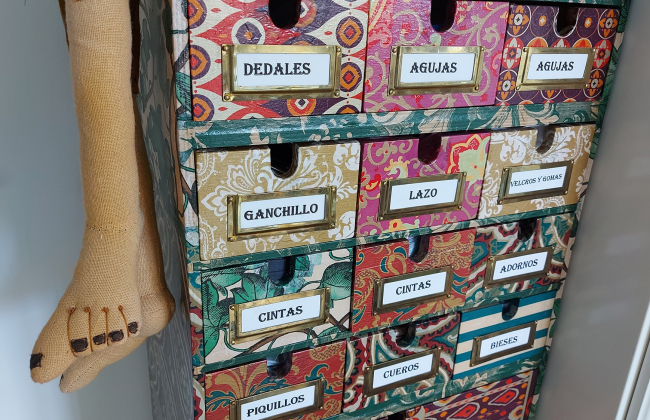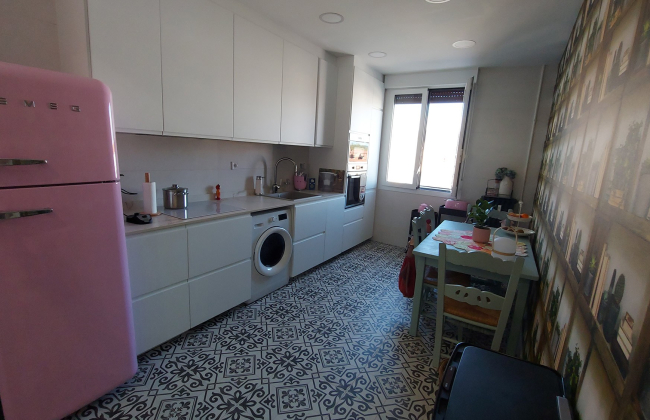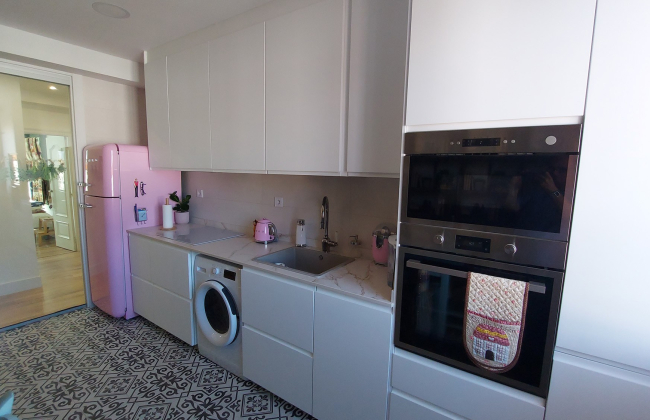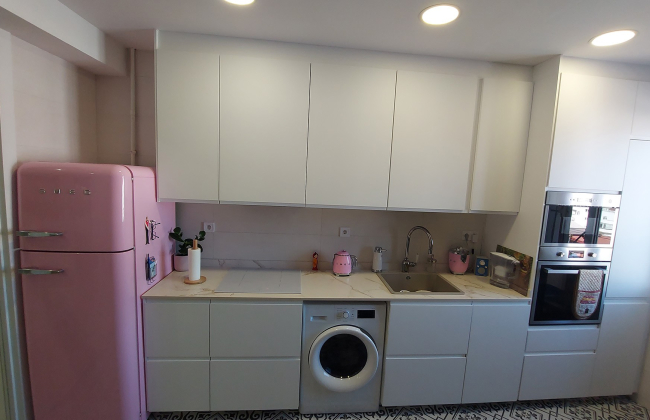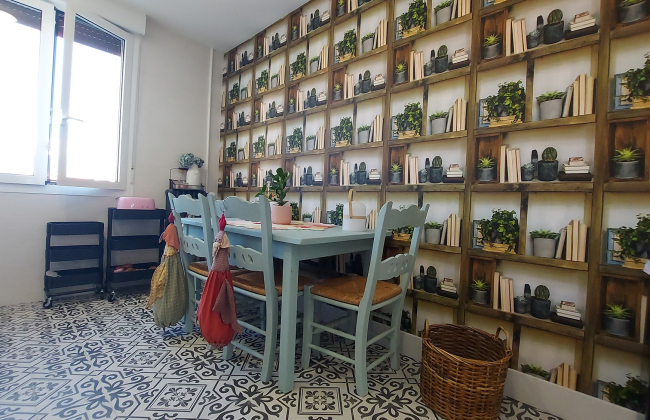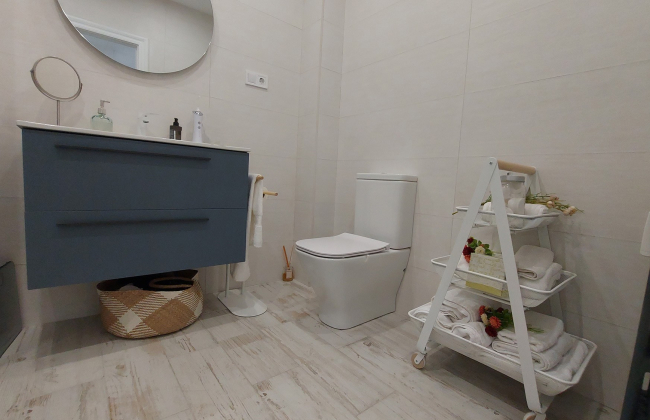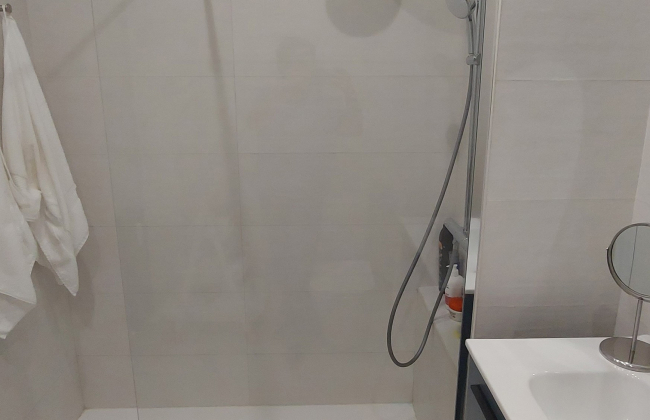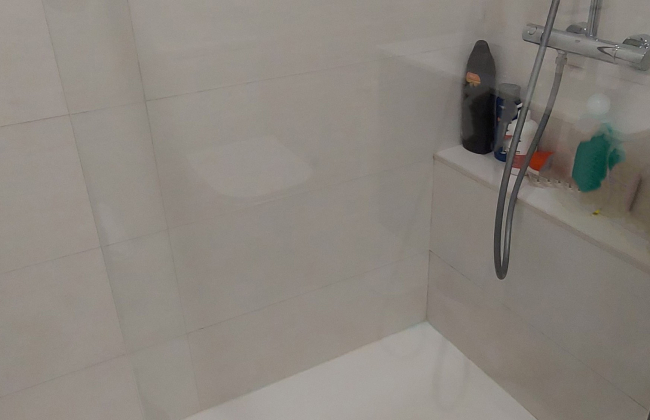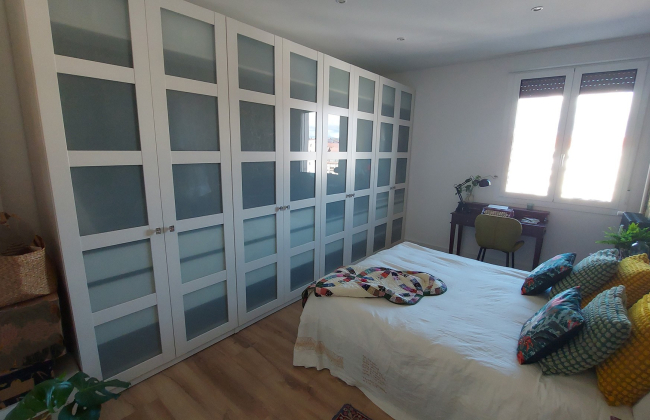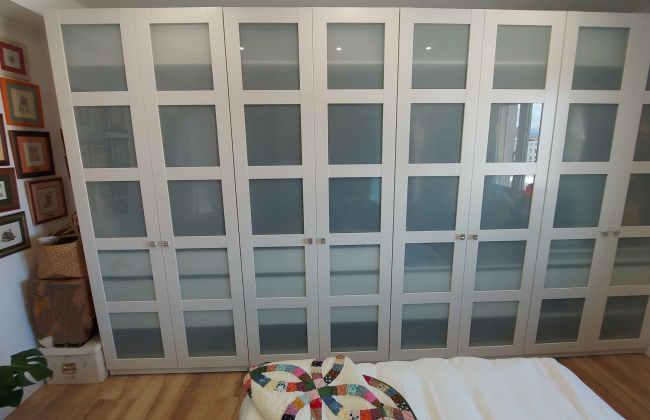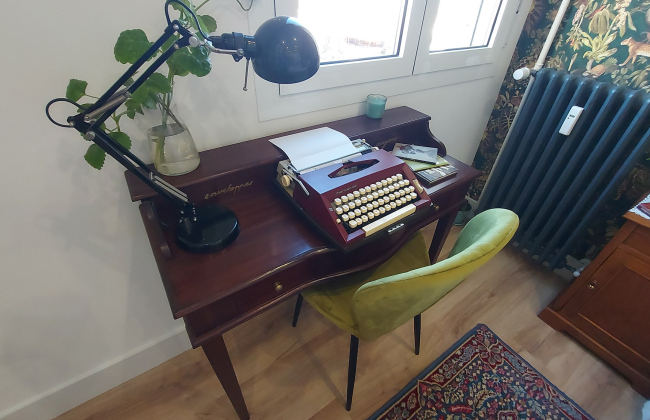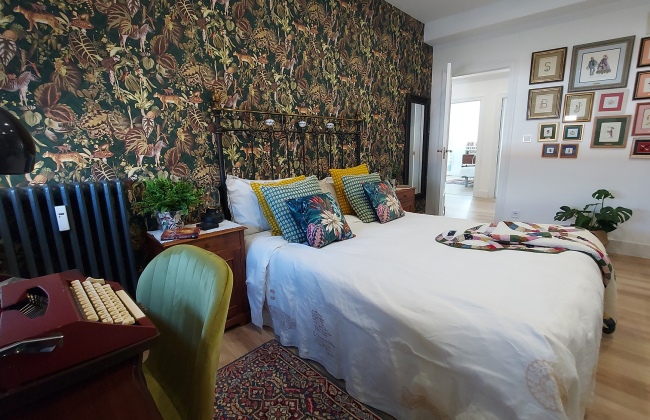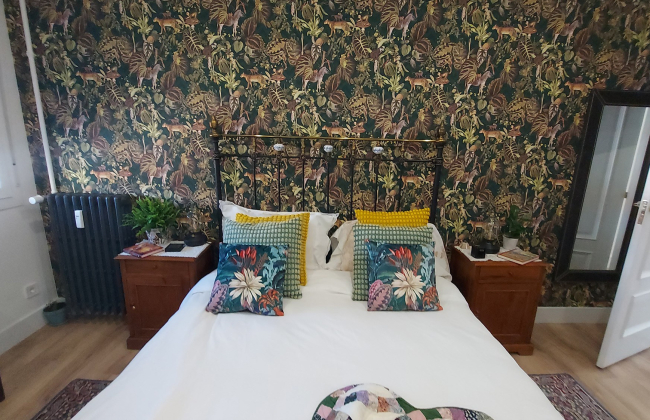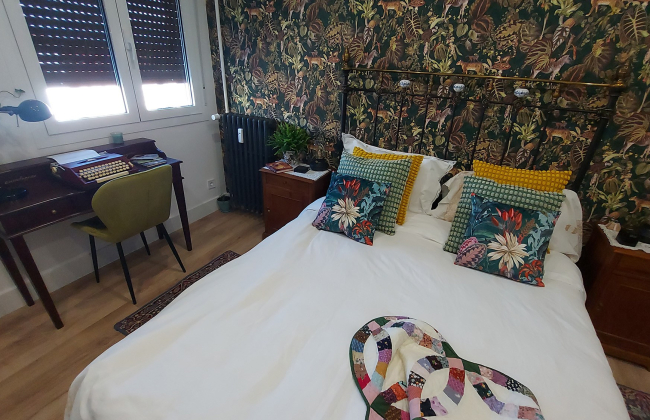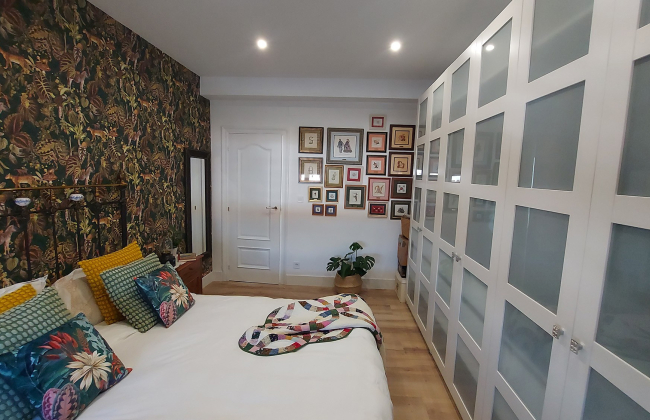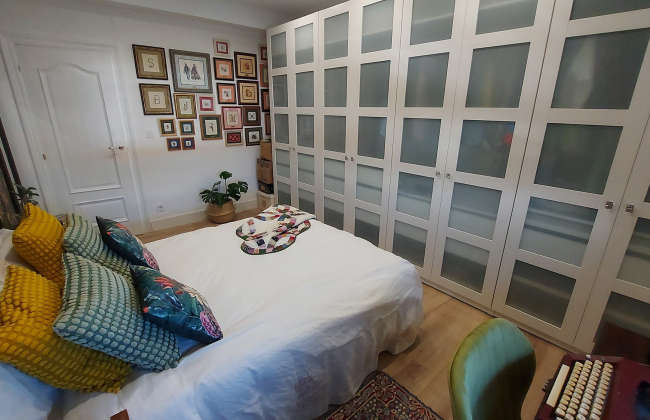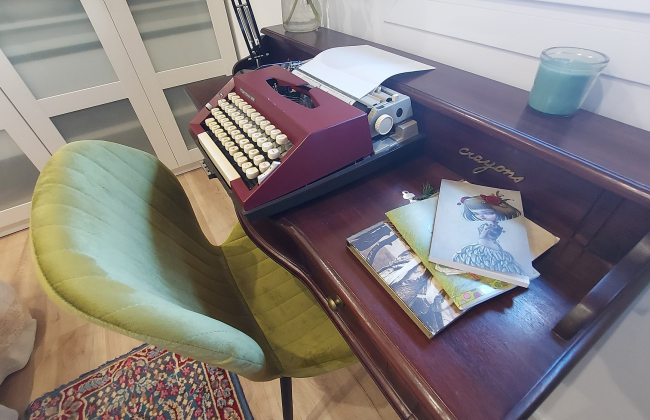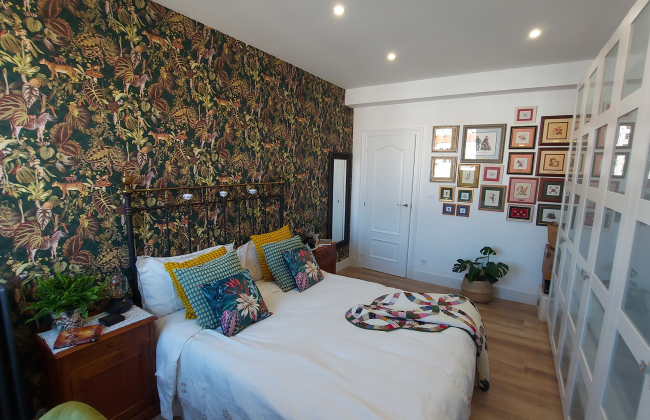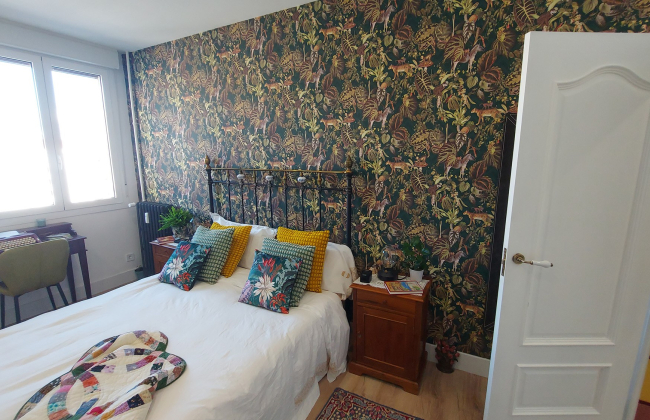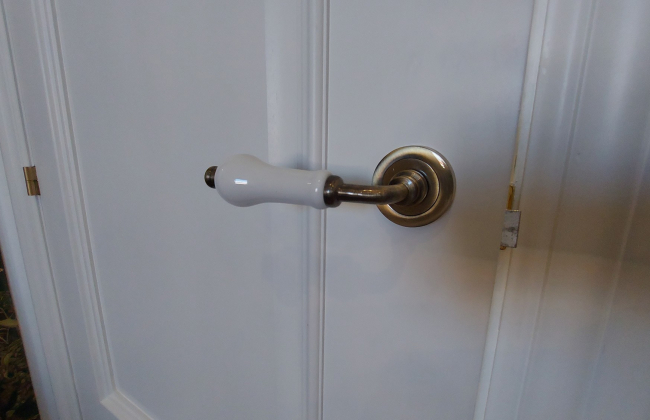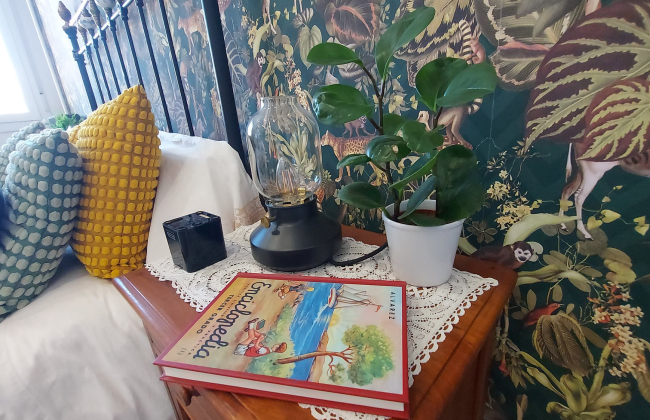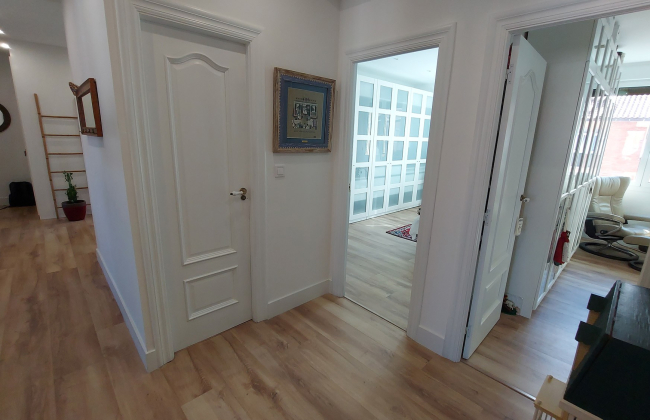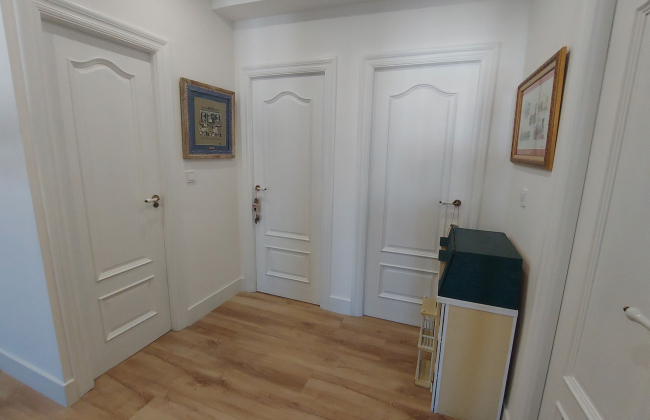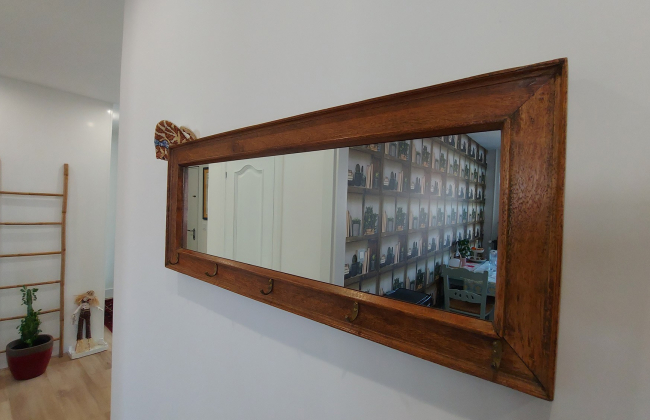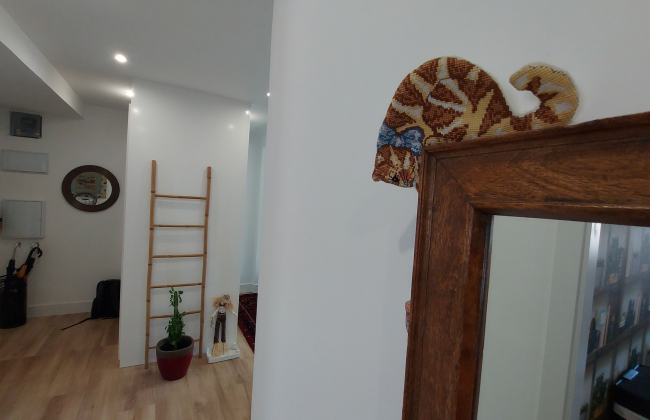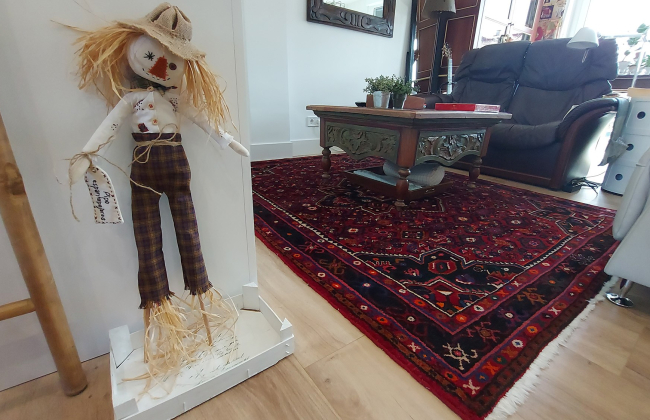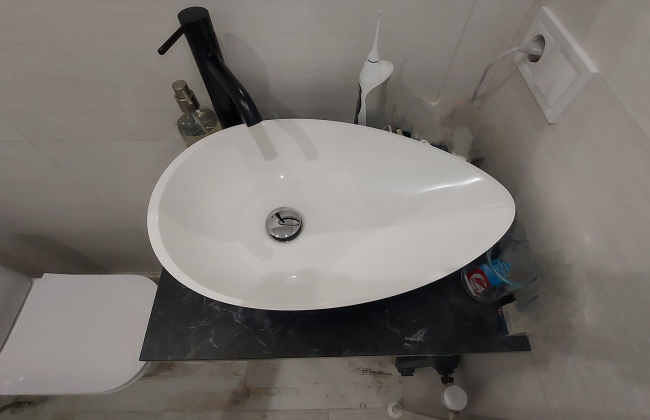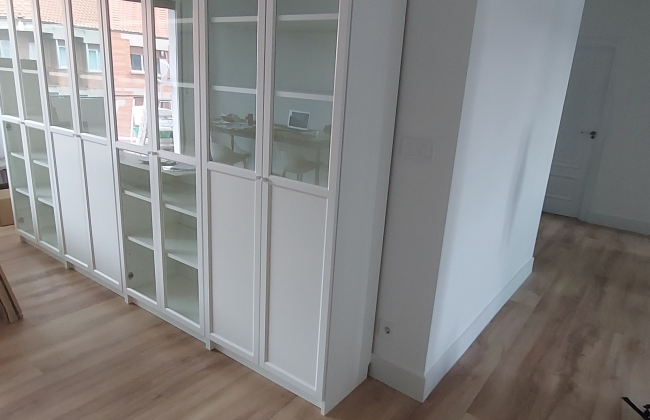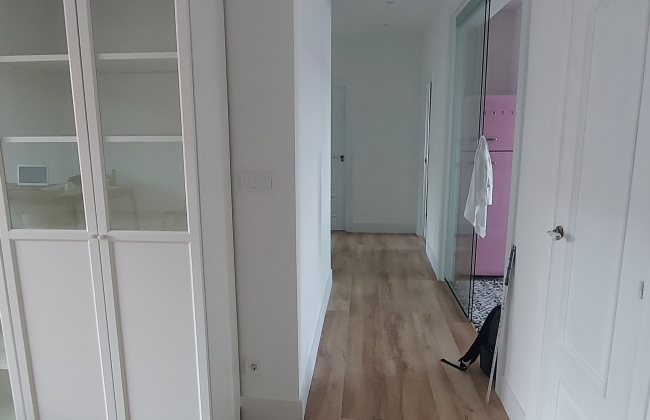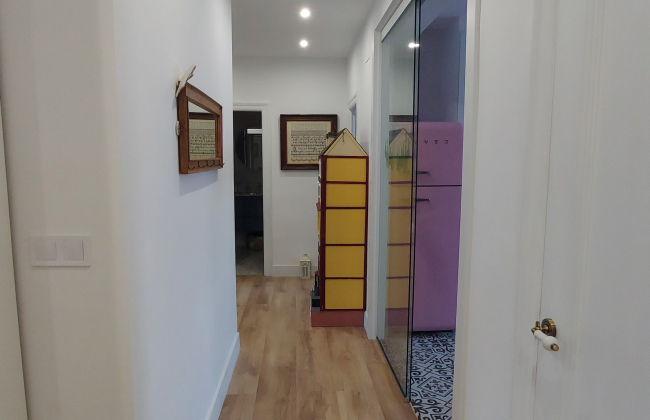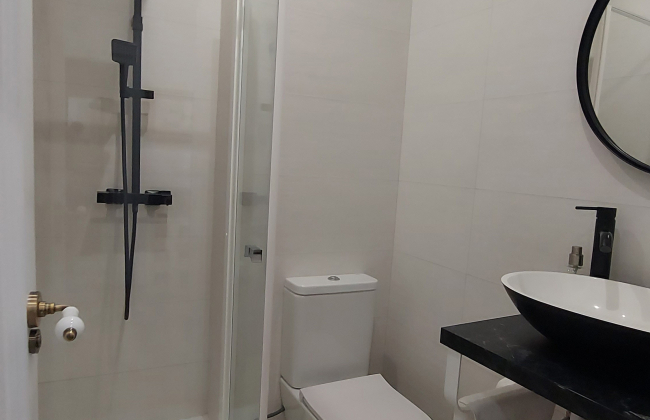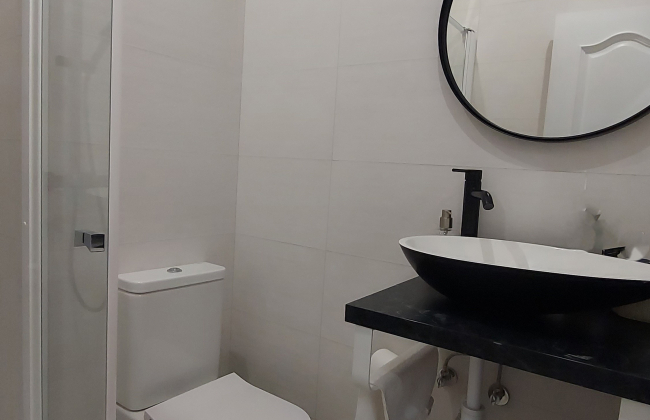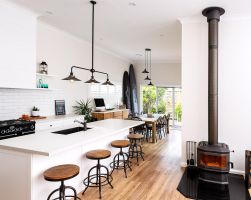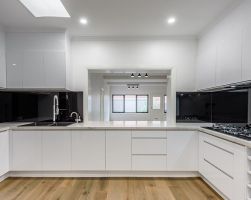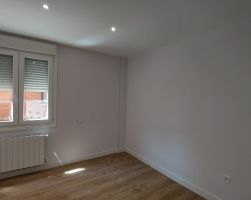Comprehensive reform in Bilbao
Work carried out
After signing the estimate and the contract with ARIZAGA CR, S.L., we proceeded to demolish and completely empty the house. We removed the bathroom and kitchen fixtures and fittings, windows, tiles, plaster mouldings and ceilings, some partition walls, pipes, wiring and switches, etc. In fact, the demolition of the partition wall and doors in the living room that communicate with the corridor, creating a single, open-plan space, is a major feature of the project. Likewise, the partition wall between the kitchen and the corridor is demolished to create a new and very special visual and lighting effect. Subsequently, a transparent glass partition and sliding door were installed, leaving the colourful pink fridge and the hydraulic tile in view from the living room, corridor and distributors.
Once this phase was completed, we proceeded to install the new electrical installation through the ceiling. To do this, we lowered the ceiling of the entire house by a minimum of 6 cm, installing galvanised steel profiles to support the new ceiling, as well as the rock wool (thermal and acoustic insulation) that is placed between the ceiling of the house and the plasterboard sheets (not sheets) that will make up the new ceiling of the house. It should be added that we use water-repellent plasterboard, resistant to ambient humidity, in the ceilings of both the kitchen and the bathrooms.
The plasterboard is placed between the ceiling of the house and the sheets (not sheets) of plasterboard that will form the new ceiling of the house. It should be added that, both in the kitchen and bathroom ceilings, we use water-repellent plasterboard, resistant to ambient humidity.
PLUMBING and HEATING
Absolutely none of the existing plumbing is used. The whole system is replaced.
Regarding the sanitary water supply, we change the pipe from the entrance to the house (connection) to ensure that the client does not have to worry about possible leaks for many years. And from here, the entire distribution throughout the house to the kitchen and bathroom, as well as the water heater and hot water distribution.
The house is located in a building with a communal heating system with vertical downpipes. Therefore, little is done in terms of distribution. But the radiators are dismantled in order to renovate the walls properly (sanding, polishing and painting), sanding and painting the radiators themselves (with special acrylic enamel for radiators containing polyurethane resins) and in the final phase of the work to fit them with new valves, gaskets, lockshields, etc.
MASONRY
After the demolition of the aforementioned partition walls, we have not found any appreciable unevenness.
In the bathroom and kitchen we have installed the ceramic tiles previously chosen by the client. The client was completely free to choose the store, brand and model. The same applies to the bathroom fittings (toilet, shower tray, screen, washbasin, etc.) and any other material.
ELECTRICITY
The existing electrical installation was the original one in the building and was more than sixty years old and, in addition to not complying with current regulations, was seriously deteriorated. On occasions like this, it is surprising that more disasters do not occur on a daily basis. So nothing is being put to good use at all.
We always start from scratch, from the connection.
We start with the installation of new corrugated pipe throughout the house (independent for each service, be it lighting, general sockets, oven, washing machine, etc.), embedded in the walls and hidden in the false ceiling. We never use previous conduits or cables (sometimes made of lead) because, as well as not complying with regulations, we have no guarantee of their condition or thickness, or that the cable may tear. Subsequently, we introduce the cable, with different cross-sections depending on its destination (lighting, oven, etc.).
With regard to the electrical panel, we install independent circuit breakers for each service, in accordance with regulations. Finally, we will issue the "Electrical Bulletin", a document that our qualified electrician issues and passes through "Industry", which certifies that the installation complies with the regulations. This bulletin is essential to register the electricity supply with any company or to increase the existing power.
We also install a telecommunications switchboard: this consists of installing an internet socket in each room and centralising them in a single switchboard. The antenna conduits are centralised in this same switchboard. With this we achieve that possible changes of operator are easier and do not involve loose or overlapping cables in the baseboard, etc.
CARPENTRY
In this case, as we explained before, the doors have not been replaced, but they have been cleaned up (covering the marks and scratches with resin) and then painted. We have also changed the mechanisms (which had faults and looseness) and the handles for others with a porcelain finish, always seeking vintage inspiration.
We have also changed the windows throughout the house. We have installed PVC windows from the leading brand Cortizo, with 5 insulating chambers, with galvanised steel reinforcements, triple glazing, tilt and turn system, etc.
To reduce the entry of heat from the outside, we have installed glass with low emissivity treatment (glass treated with silver oxide) which reduces the amount of heat (infrared rays) that enters the house by up to 80%. This treatment blocks the infrared radiation that carries the energy of sunlight without limiting the amount or shade of light that enters.
In addition, we have used virios with ARGON, instead of air in the chamber between the three panes of glass, to significantly lower the u coefficient. The explanation is simple physics: the transmission of cold-heat from one pane to another is produced by the internal currents that exist in the chamber between panes of glass. Argon is a much heavier gas than air and therefore, as it takes longer to heat up or cool down, the currents and thermal transmittance will be much lower.
Before installing the floating parquet of class AC 5, we lay a thermo-acoustic insulating fabric (known as a blanket). The purpose of the blanket is to allow the floor to settle, to dampen the sound of footsteps both towards our home and the floor below and to preserve the temperature.
The floorboard is installed leaving a small margin free with the walls (a margin that is then covered with the skirting board) so that it can expand and we do not have problems of bulging.
PAINTING
The walls of the house were also very deteriorated in appearance; gotelé paint, wallpaper simulating gotelé, successive layers of wallpaper...typical in a house that is so many years old that has hardly been maintained. Moreover, the walls were curved, with concavities and convexities, misaligned ..... For decades, stippled walls have been used to hide imperfections in the finish. But today's style of clean walls and clean lines requires a perfect finish.
In addition, previous problems with the roof and downpipes (now repaired) had left dark marks on some walls (mouldy walls) which we treated with special paint with a high opacity.
So we decided to sand and polish the walls to give them a homogeneous appearance. We covered up cracks, sanding everything afterwards. To do this we used a tool called a "giraffe". Afterwards, we applied a primer and two or three coats of paint. When it comes to choosing the colour of the paint, we offer the client a colour chart (Pantone), from which two or three of them are chosen and a sample is applied to the wall so that the client can get a realistic idea of the colours and make the right choice.
This is how we reach the final point of the work, we clean the flat thoroughly before handing it over to the client.
We deliver to the client the electrical bulletin (document in which industry certifies that the electrical installation complies with the regulations) essential to ask for the registration or extensions of power in the electrical company.
The decorative star of the house:
The success or otherwise of a decorative style is always a matter of taste; the same setting can be loved or hated in equal parts. And this house leaves no one indifferent. Especially one area (visible in the photographic report): the space formed by the kitchen and hallway. We have to admit that, at least, it is daring.
The kitchen, at the front, is dominated by the pink Smeg fridge, as well as small pink appliances from the same brand. It is combined with a set of kitchen furniture and other white or white-panelled appliances; the opposite wall, wallpapered in bright colours, contrasts strongly with the above; and creating a sort of transition, the beautiful hydraulic tile in grey tones that takes us from the peaceful white front with pink flashes to its opposite and colourful wallpaper, which also houses the table (in a blue-green transition).
All this seen from the corridor with its clean white wall and floorboards that meet (thanks to the glass partition and door) in stark contrast but create a fantasy of spaces that do not end.
The truth is that the photographs do not do justice to the reality obtained.



